
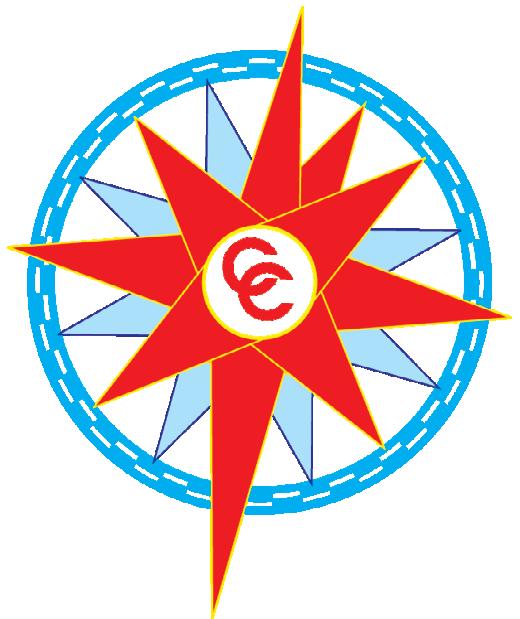
C A R I B B E A N FREE JUNE / JULY 2023 NO. 327
LIESBET COLLAERT The Caribbean's Look at Sea & Shore
ISLAND HOPPING — See story on page 22
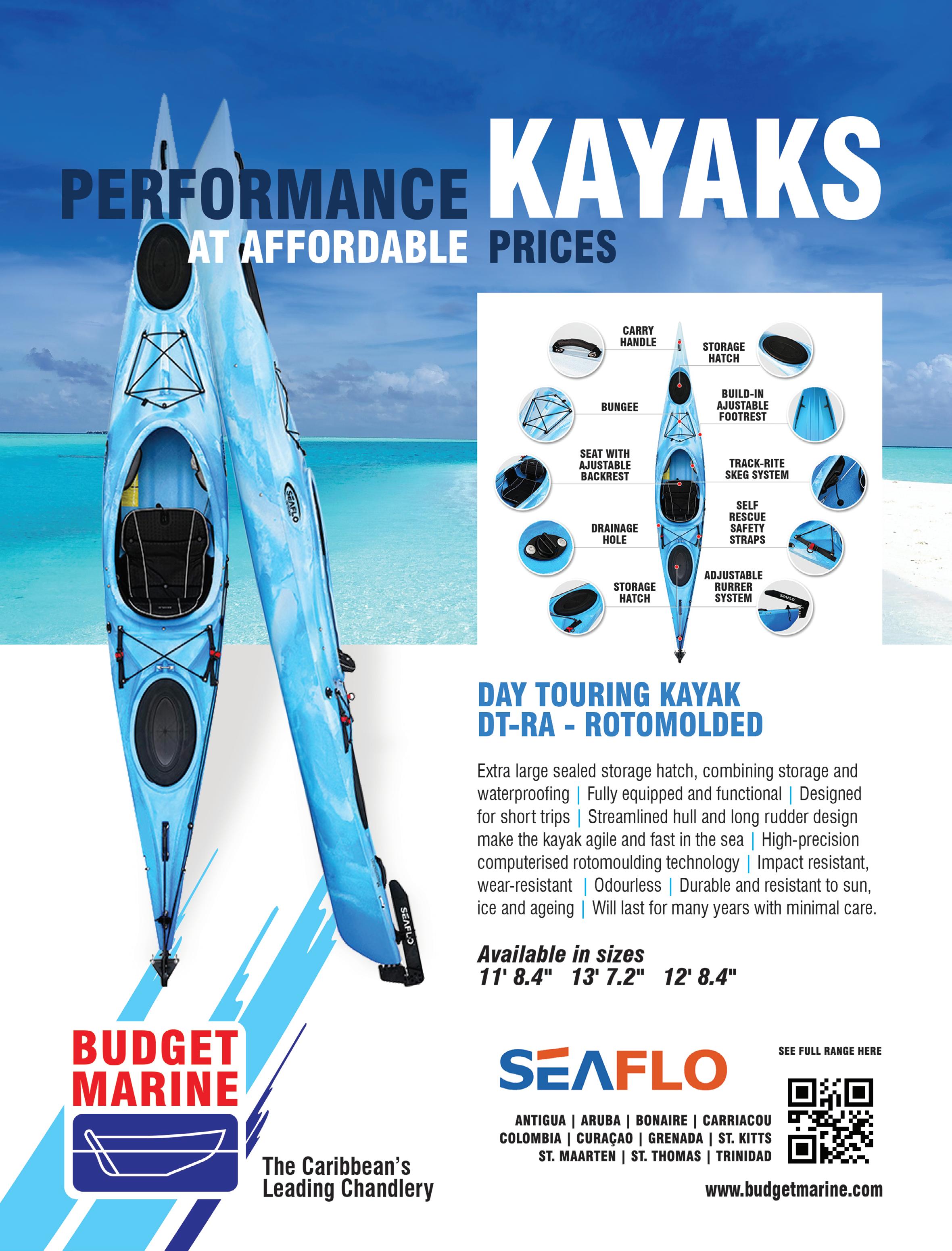
JUNE / JULY 20 23 CARIBBEAN COMPASS PAGE 2
by Liesbet Collaert
Martinique:

Caribbean Compass

Caribbean Compass is published by Compass Publishing LLC of Connecticut, USA. www.caribbeancompass.com
Publisher | Dan Merton dan@caribbeancompass.com
Publisher Emeritus | Tom Hopman
Editor Emeritus | Sally Erdle
Editor | Elaine Lembo elaine@caribbeancompass.com
Executive Editor | Tad Richards tad@caribbeancompass.com
Art, Design & Production Berry Creative abby@berrycreativellc.com
Advertising & Administration Shellese Craigg shellese@caribbeancompass.com

JUNE / JULY 20 23 CARIBBEAN COMPASS PAGE 3 Contents JUNE/JULY 2023 • ISSUE 327 Finding the Balance by Lin Pardey Falmouth Freddy & The Cruising Kanes by Niamh McAnally On the Cover Sunset in the anchorage at West Cocos, San Blas Islands, Panama. Photo by Liesbet Collaert. For more about cruising the islands of the western Caribbean, turn to Collaert's story on page 22. Hey Readers, Get Caribbean Compass By Email! Visit our website at caribbeancompass.com or just scan the QR code and enter your email address — it’s as easy as that! Featured 4 Readers Forum 6 Sounds+ 8 Club Scene: St. Kitts 10 Business Briefs 11 Channel 16 12 Regatta News 16 Eco-News 19 Book Review 32 Joyce's Liveaboard Hacks 34 Calendar of Events 34 Meridian Passage 35 The Night Sky 37 Market Place 38 Compass Cartoon 39 Classified Ads 39 Advertisers Index 18 26 Summer Season Sailing Secrets
Street Jr. Climbing to Saba
Costenaro 20 27
Caribbean
by Donald
by Lynn
Cruising the Western
French Flair
and Boatyards
...
by Lexi Fisher 22 30
Caribbean Compass welcomes submission of articles, news items and letters to the editor. See Writers’ Guidelines at Www.caribbeancompass.com/guidelines.htm. Send submissions to editor@caribbeancompass.com We support free speech! But the content of advertisements and articles are the sole responsibility of the advertiser or writer and Compass Publishing LLC accepts no responsibility for statements made therein. Articles and letters may be edited for length and clarity. We do not accept individual consumer complaints. ©2023 Compass Publishing LLC. All rights reserved. No reproduction, copy or transmission of this publication, except short excerpts for review purposes, may be made without written permission of Compass Publishing LLC. ISSN 1605 - 1998 LIESBET COLLAERT
View of the
author's
catamaran, Irie, at East Lemmon Cays, San Blas Islands, Panama.
Ahoy Compass!
Regarding the Tobago Cays mooring failure in the May Readers Forum: The park Operations Manager’s response seemed conscientious. My advice when you pick up a mooring (anywhere) is to back down on it HARD before paying— or before going to sleep. In Tyrrel Bay, Carriacou, there is a vendor with moorings you can drag right out of the bay if the wind picks up, even though he will tell you it will hold whatever size boat you are on regardless of the forecast. (However, don’t judge Carriacou by this one villain. It is a good destination— see Carriacou Cruisers FB page for useful information.)
Regarding Jack Tulloch’s letter commenting on “Looming Crisis in the Yachting Industry: Abandoned and Rotting Boats,” Chris Doyle’s article in March Compass, I think clearance forms should include a paragraph making owners clearly liable for their vessel if abandoned or disabled—not as the solution, just the first step. Towing derelict vessels to deep water and sinking them is NOT the answer—they must first be scrupulously cleaned and prepared for environmental reasons. And where (if anywhere) such disposals should happen is problematic.
This is not just a looming problem. It has long been a problem—at a smaller scale. I was once obliged to anchor in a place where the chart warned of unexploded ordnance on the bottom. Another time, I did a precautionary night anchoring far off an unfamiliar shore and fouled my anchor in a wreck. One collects such adventures over 37 years aboard.
Jim “Hutch” Hutchinson OneManSpeaks.com
CRUISERS VHF NETS
by Ken Goodings
Cruising guides, social media, happy-hour chitchat these can all be good sources of information for sailors in the Caribbean. But often one of the best ways to get up-to-the-minute news on what’s happening in individual anchorages is to tune in to the daily cruisers VHF nets. Don’t see your favorite here? Contact the Compass (editor@caribbeancompass.com).
Bahamas, Nassau: 0715 hours, Ch-14Dominican Republic, Luperón: 0800, announced on Ch-68, then switch to Ch-72 every Wednesday. On Sundays, 0900, Ch-72.
St. Martin/Maarten: 0730, Ch-10 Monday-Saturday
Antigua, Jolly Harbour: 0830, Ch-74 Monday – Saturday
Antigua, English and Falmouth Harbours: 0900, Ch-06
Antigua, Carlisle Bay: 0900, Ch-72
Dominica, Portsmouth: 0730, Ch-72 daily, then net Ch-72 in Spanish and French
Martinique, Le Marin/St. Anne: 0830, Ch-08 Monday, Wednesday, and Friday
St. Vincent and Grenadines, Bequia: 0800, Ch-68
Carriacou: 0730, Ch-69 Monday, Wednesday and Friday
Carriacou: German language net daily 0830, Ch-71
Grenada: 0730, Ch-66 (international duplex mode) Monday-Saturday
Note: If the 66 repeater is unavailable then listen on the alternate Ch-69 for this net. Please use your radio’s high 25-watt power setting for this net.
Trinidad, Chaguaramas: 0800, Ch-68
Venezuela, Puerto La Cruz: 0745, Ch-72 as available
Curaçao: 0745, Ch-72 Monday-Saturday
Note: In February 2018, this net may have been suspended due to lack of volunteer net controllers.Colombia, Cartagena: 0900, Ch-71
Panama, Bocas del Toro: Emergency net 0745, Ch-68
Panama, Colon from Shelter Bay: 0730, Ch-77
Selected Online Weather Sources
Technology used to disseminate weather forecasts is continually evolving. Although it’s been a long time since people tried to predict the weather by examining onion skins or seeing whether or not the groundhog went back into his hole, it has also been a while since mariners routinely listened to WWV radio for marine storm warnings. The use of once-popular weatherfax has been replaced by GRIB.
Although SSB radio is still useful, today, with Wi-Fi and cellular data so
widely available in the Caribbean, increasing numbers of sailors get their weather information from online sources. SSB or satellite-based weather forecasts can still be important when offshore, out of Wi-Fi and cellular range. Here's a selection that Caribbean cruisers recommend. Let us know if we missed your favorite! (editor@caribbeancompass.com).
Caribbean, National, Regional and Island Weather Websites
ABCs Weather: www.meteo.cw/rad_loop.php
Curaçao Met Department: www.meteo.cw
Barbados Weather Satellite: barbadosweather.org/GOES16/Jiren_Satellite_ Products.php#m.facebook.com/BarbadosMeteorologicalService
Martinique Weather Radar (French): www.meteofrance.gp/previsionsmeteo-antilles-guyane/animation/radar/antilles
Trinidad & Tobago Weather Radar: www.metoffice.gov.tt/forecast
USVI and Puerto Rico: www.weather.gov/sju/marine
US National Weather Service for USVI: forecast.weather.gov/MapClick.php?l at=17.728114454000035&lon=-64.81908749999997#.YIW4R1UpC9c
General Weather Websites
NOAA-NationalWeatherService-Caribbean: www.weather.gov/marine/offnt3cmz
Mike’s Weather Page: www.spaghettimodels.com
Worldwide CYCLOne and hurriCANE tracker by Hayley: www.cyclocane.com/ WINDFinder: www.windfinder.com
ON Board ON Line (Pasageweather sailing forecasts): www.onboardonline.com/weathertools
Passage Weather: passageweather.com
(provides seven-day wind, wave and weather forecasts) Weather Underground: www.wunderground.com/hurricane
General weather discussion on Wunderground Cat 6
Lead authors: Cofounder Dr. Jeff Masters, who flew NOAA Hurricane Hunters 1986-1990, & meteorologist Bob Henson, @bhensonweather www.wunderground.com/cat6
www.windyty.com
(shows wind speed and direction for 14 days in three-hour increments)
Ventusky (same look as Windytv, but different): www.ventusky.com
Weather Conversions: www.weather.org/conversion-chart
Commercial Marine Weather Service Websites
Buoyweather (free two-day forecasts in addition to paid-for custom forecasts): www.buoyweather.com
Chris Parker’s Marine Weather Center (listen free on daily SSB nets or subscribe for daily e-mails for your area): mwxc.com
Atlantic severe storm prediction (paid subscription): stormpulse.com
Hurricane Information Websites
Caribbean Hurricane Network (latest local updates from correspondents on the islands): www.stormcarib.com
US National Hurricane Center: www.nhc.noaa.gov
NHC Marine Weather Discussion www.nhc.noaa.gov/text/MIAMIMATS.shtml
NHC Offshore Reports: www.nhc.noaa.gov/marine/offshores.php
AccuWeather: sirocco.accuweather.com
Atlantic Hurricane Tracking Chart (print out for offline reference): www.nhc. noaa.gov/pdf/tracking_chart_atlantic.pdf
NOAA Climate Discussion: www.climate.gov/news-features
NHC Marine Graphicast: www.nhc.noaa.gov/marine/graphicast.php?basin=at#contentw.nws.noaa
John J. Kettlewell says, “The map at earth.nullschool.net is an interactive pilot chart, showing current conditions around the world. When you open the page you see the entire globe, then you can zoom in to see smaller regions. Click on ‘Earth’ in the lower left to get a menu. You can choose to see the world’s current wind or current patterns, or ocean waves, all with animation.”
JUNE / JULY 20 23 CARIBBEAN COMPASS PAGE 4
READERS FORUM
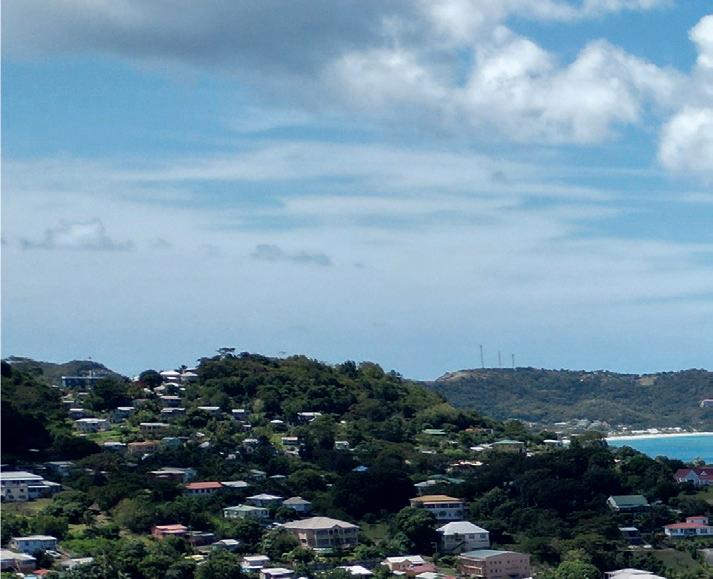
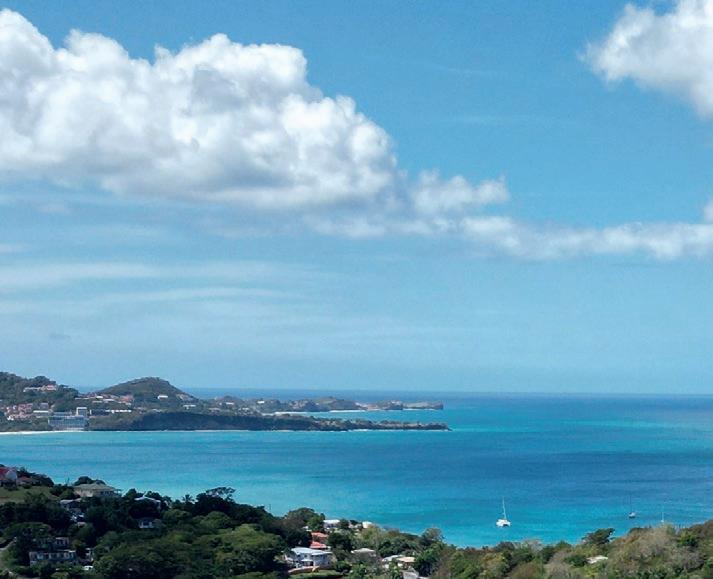


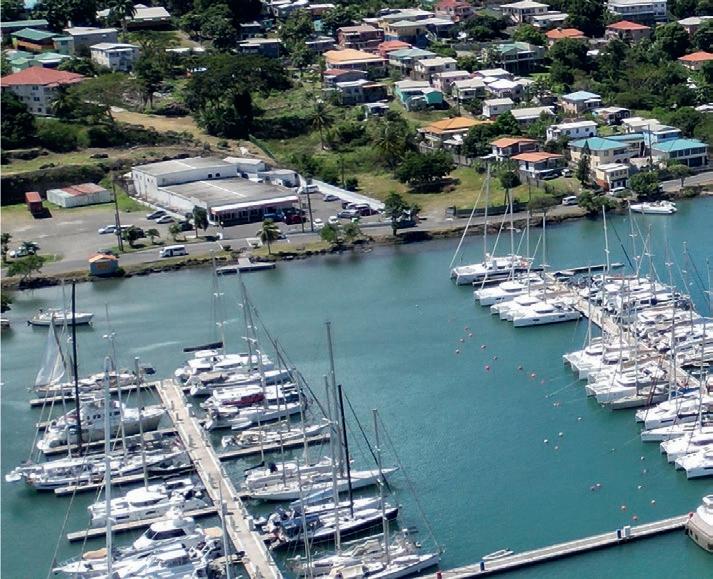

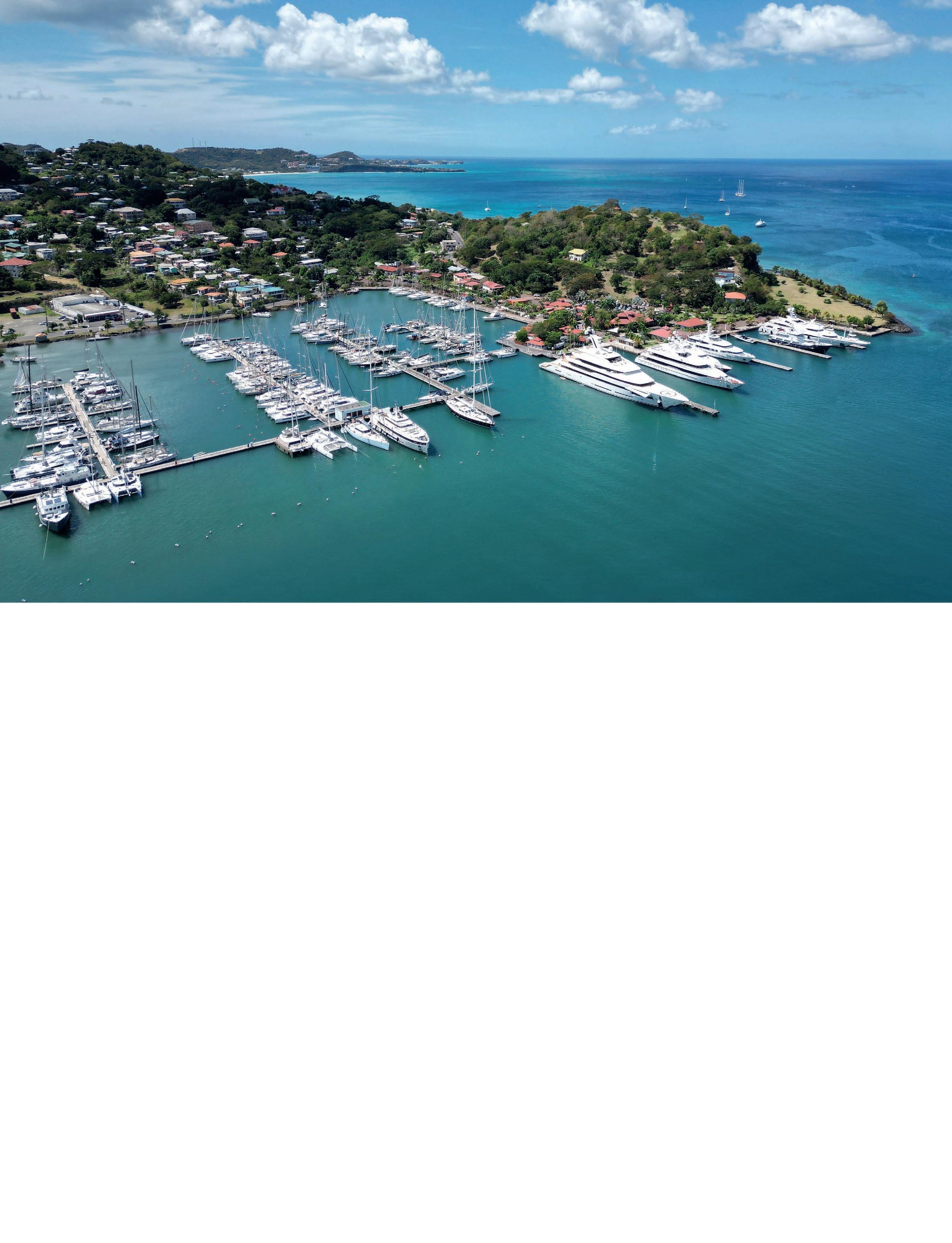
JUNE / JULY 20 23 CARIBBEAN COMPASS PAGE 5 CandNM_PLM_CompassMag 9-44x12-4in.indd 1 16/05/2023 15:25
SOUNDS+
by Tad Richards
There’s some major music within sailing distance this summer, with reggae in Jamaica and a cornucopia in St. Kitts, Aruba, Curaçao and elsewhere. And so much more! We’ve got running, eating, drinking, bodily and spiritual wellness — truly an across-the-board Caribbean experience. Start marking your calendars!
June 2-3: Caribbean Sun Splash, Willemstad, Curaçao



The two-day festival offers Afrobeats, Amapiano, Dancehall, Ritmo Kombina, Reggae, Kawina and Urban, as well as “lots of delicious foods, bringing all kinds of different cultures together.”

Headliners include R&B superstar Ashanti, whose hits run the gamut from “Foolish” to “Unfoolish,” and whose credits include multi-platinum, movie success, and playing Dorothy in a Broadway revival of The Wiz. One of Ashanti’s first recording sessions was as a featured guest on the hit song “Always on Time” by Ja Rule, a giant of hip-hop then and now, and another star of this year’s Sun Splash. Nigerian singer-songwriter-rapper Rema, who rode the hit song “Dumebi” to international stardom, is the third headliner, and beyond them, a bevy of first-rate talent. Sun Splash also promotes a festival of Caribbean Music in Amsterdam, the Netherlands, but since they take place on the same weekend you probably won’t make both of them.
For more information or to buy tickets go to www.sunsplashevents.nl.
June 3-4, KLM Aruba Marathon, Oranjestad, Aruba


If you’re thinking about running 42.2km through beautiful island scenery, you could register at klmarubamarathon.com/en/runners/Register; a marathon also always draws crowds of spectators. And afterwards, you could take a nice stroll along the beach.
June 8, Hopkins Mangu Festival, Hopkins, Belize
"In the village of Hopkins, the soil is rich in nutrients and allows for local farmers to grow a variety of different mangos," says the event web page, so what better spot for a mango festival? The event also includes arts and crafts booths, live music, and a dashiki competition.
The website, belizing.com/Hopkins-Mangu-Mango-Fest, is a little dated, but provides useful information.


—Continued on next page















23 CARIBBEAN COMPASS PAGE 6 Fuel Dock 24 hour Security Port of Entry Customs & Immigration Office - 9am to 6pm Electricity 110V/220v & Water Complimentary Wifi Laundry Service Supermarket & Boutique Cafe Soleil & Flowt Beach Bar The Loft Restaurant and Bar Indigo Dive Shop Swimming Pool Beautifully Designed Hotel Rooms Marina: VHF 16 or 68 Email: info@bluelagoonsvg.com 784.458.4308 Call: SOUNDS+
DIGITAL PAINTINGS BY TAD RICHARDS
PHOTO COURTESY OF RUN IN THE SUN
Rema
Ashanti
Continued from previous page
June 9-12: 43er Festival del Jíbaro Comerieño, Comerío, Puerto Rico
This festival that honors the field workers and laborers of the island features arts, crafts, food booths and music of this island which has produced so many musical greats. www.discoverpuertorico.com/event/43er-festival-del-jibarocomerieno/1405
June 12-17, Bonaire Rum Week
This celebration of the Caribbean’s signature beverage is back for its second year, with nine different events scheduled around the island, including a wedding of food and drink on the 17th, with Taste of Bonaire. bonairerumweek.com
Coffee and chocolate — who could ask for more? But there is more. With over 185 exhibitors you will be able to taste and also purchase different coffees, chocolates, teas, pastries, cookies, candies among other complementary items. coffeeandchocolateexpo.com
June 27 – July 3, CayMAS Carnival, Grand Cayman
A week-long celebration including soca on the beach, food, flowers, the official Caymas parade, and more — the organizers promise "a complete Carnival weekend, with all the facets of Carnival." www.caymas.ky
June 27-July 4, Fiesta del Fuego, Santiago de Cuba
Performances, exhibitions, workshops and street activities throughout Santiago de Cuba. "Visitors can immerse themselves in the street parades and traditional congas."
www.lovecuba.com/blog/cubas-fiesta-del-fuego-the-fire-festival
June 30, Aruba Summer Music Festival Performers TBA. Check arubasmf.com for updates.
June 30 – July 9, Festival de las Flores de Aibonito, Puerto Rico
Food, live music, activities for the kids…but the main attractions of this 9-day festival are the flowers and other plants — rows and rows of booths selling all kinds of plants — orchids, fruit trees, vegetable plants, heliconias, gingers, hibiscus, just to name a few, in a traditional event that has been going on for over half a century. www.discoverpuertorico.com/info/ festival-de-las-flores
July 1 International Reggae Day 2023, Jamaica
June 19-25, Bonaire Yoga and Wellness Week

No one can party all the time, and if you’re ready for a little spiritual and physical replenishment, this could be the place to do it. Bonaire offers a chance to “balance the mind, body and soul,” with a choice of yoga and wellness programs. bonaireisland.com/yoga
June 22, International Choral Festival Costa Rica for Peace
This is really a change of pace—and could be an uplifting one. The International Choral Festival Costa Rica for Peace, say its organizers, "is a celebration of music, nature, culture and peace. It is an opportunity for choral singers from all over the world to share their passion and talent with local communities and audiences." choralfestcostarica.org
June 22-24: St. Kitts Music Festival
“A rich variety of musical styles that is unique to the festival."
See our writeup at www.caribbeancompass.com/online/326-May-2023
June 22-25, Love Fest Costa Rica 2023
Held in Puerto Viejo de Talamanca, Limón Province. Performers still TBA, but the organizers also tout "our sunset Meet and Greet, the Tour de ‘Love Fest’ bike ride to Panama border, the Manzanillo bike ride ‘Booze Cruise,’ the Black Expats Costa Rica Business Expo/Meetup.” lovefestcostarica.com
June 23-25, Ocho Rios Jazz Festival, Ocho Rios, Jamaica Delfayo Marsalis, Jamaica Big band, Seretse & Friends, ISOPInstrumental Sounds of Praise, more to be announced. facebook.com/JamaicaOchoRiosInternationalJazzFestival
June 24, Kallaloo Festival, Charlotte Amalie, St. Thomas
Maybe not something you’d plan a special trip to St. Thomas for, but worth checking out if you’re there. This tribute to a traditional Caribbean dish is "a family-oriented event, music, entertainment—a kaleidoscope of festivities, a taste of culture from many chefs from around the Caribbean celebrating the origin of kallaloo.”
June 25-26, Coffee & Chocolate Expo, Puerto Rico Convention Center, San Juan
The organizers of "24 hours of celebration for reggae culture" suggest that you "celebrate International Reggae Day in your own way, by organizing your own event in homage to the impact that Reggae music has." You could do that, or you could come to Kingston to celebrate where reggae was born, and where it still lives. www.ireggaeday.com
July 4, Fourth of July in Aruba
If you’re homesick for the USA on its Independence Day, but not so homesick that you actually want to give up cruising the Caribbean, Aruba offers good old-fashioned 4th of July festivities, complete with fireworks.
July 8, Festival Arcano: Luna, magia y tabú, Ponce, Puerto Rico
This festival of moon, magic and taboo looks to be the NSFW event of the season, with “a journey to know your erotic body in the body mapping workshop” conducted by Vanessa, among other magic and taboo offerings.
www.facebook.com/search/top?q=festival%20arcano
July 10, Piña Colada Day
If you’re going to sail to Jamaica for International Reggae Day, why not add a sporty, upwind leg to your voyage and swing by Puerto Rico to help them celebrate the national beverage? nationaltoday.com/nationalpina-colada-day
July 10, Mi Habana Baila Festival, Havana
Cuban dance
www.mihabanabaila.com/en
July 10, Mango Melee & Tropical Fruit Festival, St. Croix
Two mango festivals this summer? We must be in the tropics. Well, who can resist tropical fruits? And this festival features chefs and cooks from around the Virgin Islands vying in the "Mango Dis, Mango Dat" competition. www.gotostcroix.com/events/mango-melee
July 12-19, St. Lucia Carnival
St. Lucia presents itself as a monthlong carnival, but that much fun can wear a body out, and there are other Caribbean events you might be considering dropping by during the month. The main event is this midmonth week, featuring, its organizers write, “a massive celebration filled with elaborate costumes, intoxicating rhythms, parades, pure Caribbean energy, and more...the main event is the street parade.”
carnivalsaintlucia.com/carnival-2023
—Continued on next page
JUNE / JULY 20 23 CARIBBEAN COMPASS PAGE 7
PHOTO COURTESY OF TOURISM CORPORATION BONAIRE
Continued from previous page
July 16, Reggae Sumfest, Montego Bay, Jamaica
Reggae Sumfest is a huge Reggae explosion from the heart of this worldwide phenomenon. It begins with a beach party, and continues with concerts each night of the festival, featuring some of reggae’s most explosive superstars. Here are some of the highlights:
• “Brown Skin,” “Youth Dem Cold” and “Grooving My Girl” are just a few of the hits by Richie Spice He’ll appear July 16, along with
• Morgan Heritage, two-time Grammy winners and sons of the late reggae legend Denroy Morgan
• Controversial dancehall performer Tommy Lee Sparta, whose dark themes in songs like “Some Bwoy” and “Psycho” thrill many and disturb some, on July 21
• And a stellar lineup concluding the fest on July 22, including Grammy-winning "Queen of Dancehall" Marion Hall, the first female deejay to be certified as triple-platinum
• Freddie McGregor, a reggae giant since he was seven-year-old “Little Freddie,” honored by a Marcus Garvey Lifetime Achievement Award from the Institute of Caribbean Studies

• And two of McGregor’s sons, Stephen “Di Genius” McGregor, Grammy-winning producer and songwriter for Drake, Shakira, John Legend and others, now a dynamic performer in his own right; and silken-voiced Chino, with “an undeniable mystique that drives female fans wild.” www.reggaeville.com/dates/festival-details/reggae-sumfest-2023/ lineup; www.reggaesumfest.com
July 16, Cabarete Kite Fest, Dominican Republic
A festival on the water, featuring world-class kiteboarders. Cabarete is on the north coast of the Dominican Republic, and the event should last most of the week, but dates are not firm yet. cabarete.com/cabarete-kite-festival-2023-dominican-republic
July 7 – 15, Belize Culinary and Culture Tour
More for tourists than cruisers, but still, Belize goes all out over this week with "an immersive trip to welcome you to this incredibly diverse and beautiful country! Spend eight nights and nine days exploring the beauty of Belize and one-of-a-kind activities that celebrate the local food and culture on this small group tour." madisoneatsfoodtours.com/belize-it-culinary-and-culture-tour
July 28 – August 1, Dream Weekend, Negri, Jamaica
Forbes Magazine recently listed Dream Weekend as one of the top festivals in Jamaica, stating "Jamaica is the perfect destination to enjoy a festival and Dream Weekend provides an experience of non-stop partying in the tourist destination of the 7-mile beach in Negril.” The entertainment is worth staying awake for: Shenseea, Valiant, Stalk Ashley, and Skeng dreamwknd.com
July 29-30, AnimeCom Fest 2023, Kingston, Jamaica
If you (or your kids) are into anime, here's "a fantastic two-day multigenre convention and entertainment festival celebrating arts, pop culture and cultural diversity." www.animecomfest.com
CLUB SCENE: ST. KITTS
by Vincent Mattiola
While you take in the St. Kitts music festival, enhance your experience. De Strip – South Frigate Bay
No place embodies the spirit of St. Kitts quite like The Strip (“De Strip”), a collection of ten radiant beach bars thriving in the lush tropical atmosphere of South Frigate Bay. It’s impossible to play favorites here, with each venue offering a slightly different twist on local Kittitian flavors and indulgences. There’s a hedonistic ambiance on De Strip that borders on synesthetic; the sounds, aromas, flavors, and visual stimulations are palpably blended into an experience that you might call raucous, but undeniably captures the very essence of the St. Kitts musical entertainment scene.
The density of beach bars and restaurants on De Strip has grown since The Monkey Bar first christened its open-air dance floor in the early 90s. Dancing with the stars overhead and sand underfoot, entrepreneurial developers quickly realized the potential of South Frigate Bay’s beach and ocean front access. Today, the waterfront is lined with unique establishments designed to welcome patrons into the nightly spectacle.
At the eastern end of the bay is The Dock, part of the Timothy Beach Resort, which hosts local bands or DJs on Sunday nights and allows visiting cruisers to tie up their dinghies on the small craft pier. Walking down the beach, we next come to Mr. X’s Shiggidy Shack, considered by locals one of the best "lime” spots on the island. Known for roaring bonfires, live music on Thursday nights, trivia on Wednesdays, Karaoke on Saturdays, and breakfast Sunday mornings, you’ll be welcomed by Mr. X himself in the characteristic "time well wasted” manner.
Continuing along De Strip, we find Zanzi Bar and Cathy’s Ocean View serving fresh local meals and cocktails to entertaining playlists each night. Vibes Beach Bar is next in the lineup, with a sports bar meets beach bungalow atmosphere and nightly themes supported by a variety of live entertainment. Oceans and Patsy’s Beach Bar serve homestyle favorites, with Karaoke “mike night” on Thursdays. Boozies on The Beach and Inon’s Beach Bar complete our trip down De Strip with their friendly & engaging owners likely to join you for a sundowner while the music flows.
The Godfather Music Beach Bar

Standing on the shore of South Friar’s Bay, the vista to the east remains much as it might have been during pre-colonial days with the rolling hills of St. Kitt’s Southeast Peninsula spilling, untouched, into the horizon. Nevis peak stands proud in the background, and the grand turquoise bay welcomes you to splash around. Sounds and tempos of Afro roots pulse across the beach, with the distinct upbeat melodies of Africa Fêtestyle tunes stirring you to groove with the music.
Behind you is The Godfather Music Beach Bar, a modest, yet authoritative staple of the St. Kitts entertainment scene. Embodying a picturesque traditional beach bar concept, this humble venue is a bold demonstration of the will to intentionally defy the modern, gaudy waterfront development which has plagued the dual-island nation. The Godfather has passionately served intrepid travelers, cruising sailors, locals, and expats since the early 2000s, although it was entrepreneur John Francis who solidified the venue’s distinction as a multicultural hub for artistic expression. As a champion of diverse global music, this enchanting venue supports live entertainment across a euphonic spectrum unparalleled for the region. Hosting Full Moon parties, international artists, blues jam sessions, jazz, house, trance, ambient, and all genres of Caribbean music, The Godfather welcomes everyone into their immersive beachfront venue. Whether hosting a fundraiser, bonfire, BBQ, or volleyball tournament, there’s always something happening in South Friar’s Bay. Throughout June, drop your anchor and come visit during the week of St. Kitts Music Festival for a chance to bump shoulders with artists like Burna Boy and other African-roots music legends. The Godfather will be hosting unique events throughout the summer, so we invite cruisers to come see a different version of St. Kitts which revels in being an authentic, unpolished, and unapologetically “off-beat” experience.
JUNE / JULY 20 23 CARIBBEAN COMPASS PAGE 8
DIGITAL PAINTING BY TAD RICHARDS
Richie Spice
PHOTO FROM COLLECTION OF JOHN FRANCIS
•The most experienced, most professional yard in the Caribbean with the most comprehensive list of onsite marine services and contractors – FACT!!

•At the best prices – FACT!!
• FREE water - FREE fully functional WIFI
•All this in the least extreme weather zone in the region – FACT!!
Treat your beautiful boat to the best. You know she deserves it!
JUNE / JULY 20 23 CARIBBEAN COMPASS PAGE 9 YACHT
Chaguaramas Bay, Trinidad VHF CHANNEL 69 160 Ton Marine Travelift - Maximum Beam 31 ft No Forestay Removal On Most Yachts Below 60 ft Fully stocked chandlery, hotel and restaurant on site P.O. Box 3168 Carenage Trinidad • Tel (868) 235 4PYS (797) reservations@peakeyachts.com • www.peakeyachts.com
SERVICES
CONTACT US TO LEARN ABOUT OUR SUBSTANTIAL DISCOUNT SPECIALS.
BUSINESS BRIEFS
Dolphin Water Taxi Routes & Services
Dolphin Water Taxi, rated "best water taxi in the Virgin Islands" by the St. Thomas Daily News for five straight years, services the British and U.S. Virgin Islands, including St. John, 24/7 to get from 4 to 50 passengers to any island destination.

Dolphin is the only USVI carrier delivering and picking up guests from any BVI dock location or charter boat. Companies served include The Moorings, BVI Yacht Charters, TMM, Scrub Island Resort and Dream Yacht, Nanny Cay locations of MarineMax and Horizon Yachts, and Little Dix Bay on Virgin Gorda.
Express passport check-in and customs services are offered at the Cyril E. King Airport baggage claim area in St Thomas for BVI travelers. Complimentary beer and water are also provided. www.dolphinshuttle.com; 340-774-2628
North Yacht Shop Reopens
North Yacht Shop in Grenada has reopened under new management, stocking products from anchors, ropes, fenders, and marine construction materials from leading brands in the industry.

The chandlery offers a 15 percent discount to new account members, a pre-order to save for the boating season, and a 15 percent storewide discount valid until August 31. Staff will work with you to find specific products.
North Yacht Shop is located at Clarkes Court Boatyard & Marina in Grenada. info@ northyachtshop.com; 473-423-1201
Successful Season for Port Louis Marina, Grenada

Port Louis Marina has experienced an outstanding number of visiting yachts and heightened berth bookings during the Caribbean high season.
“It has been a very busy season at Port Louis,” says Zara Tremlett, marina manager. “We have seen a huge increase of berth bookings
including annual, seasonal, cruisers, catamarans and superyacht enquiries.”

The marina has also hosted several prestigious events, such as the ARC+, Royal Ocean Sailing Club, Viking Explorers, Globe 40, The Oyster World Rally and Grenada Sailing Week. A weekly Farmers Market has been established at the marina, and monthly drinks are hosted on the pontoons as an opportunity for everyone to meet and share sailing experiences.
cnmarinas.com/book-a-berth
Spend a Safe Hurricane Season in Grenada
Renée Goodwin of the Grenada Tourism Authority reports: Grenada, Carriacou and Petite Martinique, geographically located below the hurricane belt, are the choice for many waiting out the hurricane season.
Many yacht owners start heading for the three islands as the season approaches, not only for the calm and sheltered anchorages and world-class marinas, but also for the hospitality and calendar of events that await them ashore, from fine dining and live entertainment to the beauty and serenity of nature without hurricanes.
The region’s longest running regatta, Carriacou Regatta, is August 4 – 7 this year, and is immediately followed by the Spicemas Carnival, which is set to culminate on August 14 – 15, an authentically Caribbean spectacle of color, culture, tradition, and music in Grenada.


Later in the year, Carriacou hosts its annual Corn Festival on October 29 and Parang Festival from December 15 – 17. Both these events will benefit from the results of the Pure Grenada Excellence Champion customer service training program, which recently concluded in Carriacou with over 250 hospitality and tourism workers participating.
Finally, December brings the second annual Grenada Rugby World 7s tournament from November 30 – December 1.
Service Team
• Yacht Concierge 24/24 - 7/7
• Electronic Clearance via Email
• 4G/LTE & TVRO products & services
• Project Management: Haul-Out, Maintenance
• Gourmet provisions
• Medical Turnkey Assistance & MEDEVAC
JUNE / JULY 20 23 CARIBBEAN COMPASS PAGE 10
Dolphin Water Taxi operates round the clock for customers.
The new management crew at North Yacht Shop, Clarkes Court Boatyard & Marina, Grenada
Business was brisk during high season 2023 at Port Louis Marina.
High-profile regattas are part of the winter calendar in Carriacou
Spicemas carnival
Cell : +596 696 45 89 75 / Office : + 596 596 52 14 28 / mail : douglas@yachtservices.fr www.douglasyachtservices.fr
« A to Z » SERVICE AGENT
PHOTOS BY ARTHUR DANIEL
Channel 16
It’s Smooth Sailing (Finally) for Kids and the Sea
The 2017 hurricane season kicked off a series of hardships and hurdles for the Kids and the Sea (KATS) program in the United States Virgin Islands. Now, after recovering from Irma and surviving a move and the global pandemic, the Coral Bay, St. John-based sailing program is back in full swing, with 16 new students and new approaches, The Virgin Islands Daily News reports.
“We’re trying to introduce new aspects so children see the many ways they can appreciate and love the sea that surrounds them,” says program director Jenn Robinson. “We’ve developed these new blocks of exposure to include swimming, paddle boarding, and how to run small outboard dinghies.”
Where students once had to pass a swim test, they now devote more time to learning swimming techniques; the former rowing program now encompasses seamanship as a whole, with children learning about currents, waves, and how to operate a small rowboat.
At the end of the seamanship program, which typically runs from October through May, students then move on to learning how to sail.
It’s a fitting evolution for a program whose roots are grounded in tragedy. Kids and the Sea was founded in response to the 1986 drowning of three Boy Scouts during an overnight trip to a cay near Pillsbury Sound.
World ARC 2022-23 Celebrates in St. Lucia
Saturday, April 15, was the final day of the second half of World ARC 2022-23, a unique edition of World Cruising Club’s rally, which ran without a “first half” of the round the world rally due to Covid. A stalwart group of participants came together in a smaller than usual group in
exploring Europe and the Mediterranean.
Andrew Bishop, recently retired from World Cruising Club, orchestrated the spectacle from onboard Celtic Star. Participants thanked him for his commitment to World Cruising Club over thirty years, encouraging and enabling so many to undertake passages they might otherwise only have dreamt of doing.
Youth Sailing Program Scores in Sint Maarten
The Sint Maarten Yacht Club hosted its annual fundraiser for the Youth Sailing Program with a raffle and an online silent auction in April. Over 170 companies on Sint Maarten participated in donating products or services with $17,000 raised.

All funds go to the Youth Sailing Program of the Sint Maarten Yacht Club. The sailing school offers after-school sailing classes to 80 children on a weekly basis, and four days a week, during school hours, the sailing school organizes the primary school sailing program. For more information, contact saskia@smyc.com.
VG Sailing Association Trains Coaches
St. Vincent and the Grenadines Sailing Association, in conjunction with World Sailing’s Steering the Course initiative, has trained eight new sailing instructors/coaches.

Sailors from St Vincent, Canouan, Mayreau and Trinidad attended the six-day course run by Coach Hannah Stodel at Blue Lagoon Hotel and Marina, St Vincent.
Stodel, a four-time world champion and three-time para-Olympian, covered the skills of instructor, race coach and regatta management both in the classroom and on the water.
The new level two coaches are Tegan Deane, Mia Bailey and Scarlett Hadley. The new level one instructors are Aliyah Forde, Lorna Bacchas, Vanessa Hadley, Jennifer Deane and Lisa Gaymes.
Darwin, Australia, in September of last year for the passage across the southern Indian and Atlantic oceans and on to St. Lucia, reigniting the rally spirit and re-starting their cruise in company with the support of WCC. Covering some 12,000 nautical miles, this group has bonded with shared memories and magical moments.
After two weeks of cruising the southern Caribbean from Grenada, the seven yachts finishing what had become known as World ARC 2019-23 gathered at Marigot Bay Yacht Haven to re-group before their parade of sail. The yachts formed a line with Celtic Star heading the column as they made passage along the coast, including a circuit of Castries Harbour, to cross the finish line in Rodney Bay, marking the end of the circumnavigations started with World ARC’s 2019, 2020 and 2021.
For Ko Tangaroa and Nakula, whose crews had started their circumnavigations with World ARC from Darwin and Lombok, Indonesia, respectively, St. Lucia marked the halfway point. Each plans to complete their World ARC adventures restarting in 2025 or 2026, after time
Three Women Sailors from USVI Earn Honors
Three women sailors from the U.S. Virgin Islands were among those receiving honors from the New England Intercollegiate Sailing Association, according to The Virgin Islands Daily News
Topping the list of V.I. honorees was St. Thomas’ Mia Nicolosi, a sophomore at Yale University, who was named the NEISA’s women’s skipper of the year, as well as earning first-team all-NEISA skipper honors.
Nicolosi, an Antilles School graduate who earned All-America skipper honors from the Intercollegiate Sailing Association last season, helped the Bulldogs’ women’s sailing team to the NEISA women’s team race championship on April 16 and a fourth-place finish in the NEISA women’s fleet race championships.
Also honored by the NEISA was St. John’s Savannah Young, a sophomore at Brown University, who earned first-team all-NEISA crew honors.
Young, also an Antilles graduate, helped the Bears to a third-place finish in the NEISA women’s team race championships and a sixth-place finish at the NEISA women’s fleet race championships.
The third V.I. sailor, St. Thomas’ Caroline Sibilly,
a finalist for the NEISA’s women’s rookie of the year award.
JUNE / JULY 20 23 CARIBBEAN COMPASS PAGE 11
was
PHOTO BY RONALD RAOUL PHOTO COURTESY SVG SAILING ASSOCIATION
Cruisers from World ARC 2022-23 mark a rally milestone dockside at Marigot Bay Yacht Haven in St. Lucia.
Ky-andra Ashton, Rubby Moraine, Lisa Gaymes, Rohanna Warren, Aliyah Forde, Helen Forde, Kiara Forde, Ronessa Hanson, Mia Bailey, Jennifer Deane, Scarlett Hadley, Tegan Deane, Lorna Bacchus, Shamesh Joseph, Jenny Trumble, Vanessa Hadley, Coach Hannah Stodel
REGATTA NEWS
Stantons Dominate St. Croix International Regatta
The Stanton family brought home the hardware from the 30th St. Croix International Regatta, with family members winning three class titles as well as the overall title in the April 2023 regatta, according to the Virgin Islands Daily News.



Scott Stanton, aboard Big Island, topped the IC-24 class with a perfect 7-for-7 weekend in the waters off St. Croix, as well as claiming the “Captain Nick’s Perpetual Award,” named for regatta co-founder Nick Castruccio, for the top overall corrected time in a combined IC-24 and Caribbean Sailing Association Non-Spinnaker class.
Peter Stanton, on Rhode Runner won in the Rhodes 19 class, and Chris Stanton, on his Alerion 28 Margaret, took the CSA Non-Spinnaker class.
Joe San Martin won in the Multihull class, and Atlas Kaough won the Optimist fleet title.
Les Voiles De St Barth Richard Mille 12th Edition

A rain squall canceled the final day of racing at Les Voiles de St. Barth Richard Mille in April 2023. Final ranking swaps were forfeited, but overall and class standings prevailed.
Overall multihull class winner is Erik Maris’s MOD70 Zoulou, also awarded the prestigious Richard Mille Multihull Trophy. While Zoulou was the only MOD70, navigator Loïck Peyron gave credit to the other multihulls that held their own against the powerful trimaran. Nemo, a HH 66 owned by Todd Slyngstad, won the offshore multihull class.
Maxis
Pyewacket, Roy P. Disney’s Volvo 70, won its class and the 2023 Caribbean Maxi Challenge, open to boats 60 feet and longer.
CSA 1
Balthazar, a Swan 50 OD, cleanly swept the CSA 1 class. “Everything went our way, and the owner [Filip Balcaen] did a fantastic job driving the bus,” said navigator Bouwe Bekking.
CSA 2
First-time competitor Steve Rigby of the J/122 El Ocaso had earned enough credit early in the week so that the tail end of two third-place finishes wasn’t severe enough to knock them off the top of the CSA 2 podium.
“We had a great start with three first wins, and a little bit trickier on
races four and five,” said the British skipper. “It felt good today that we had a great start and were in good shape to hopefully win the race, until they abandoned it due to lack of wind.”
CSA 3 & 4
Winning the CSA 3 class by one point, Sergio Sagramoso’s Melges 32 Lazy Dog had a great week competing against the Melges 24 Team Island Water World. “We’re very happy with our performance,” said Sagramoso. “It was tough to compete against a boat you have to give so much time, but on the other hand it really pushed us. And because of the distance between us, many times we would have very different wind conditions.”
It was an especially sweet victory for Sacha Dauna, owner of the First Class Pepsi Max in CSA 4. He had raced the event six times previously on board Pamala Baldwin’s Liquid, but the 12th edition was his first time at the helm.
Diam 24 OD
Nicolas Ramis, on board Cry Baby, is the winner in Diam 24 OD. The 13th edition of Les Voiles de St. Barth Richard Mille is set for April 14 – 20, 2024.
Trike and Libertas Win 2023 Governor’s Cup
The 2023 B.V.I. Governor’s Cup took place on Sunday 30 April with seven boats competing across two classes.
Race 1 was started off Nanny Cay with a leg up the channel to round Deadchest to starboard and then finish in Deadman’s Bay. Race 2 took the fleets back the way they came, leaving Deadchest to port, reaching across to Hog Valley Green and then finishing off the Yacht Club balcony at the entrance to Road Harbour.
The two monohulls, Libertas, skippered by Kevin Wrigley, and Alex England’s WannaB were away first and sailed a close race up to the final moments. On the final leg, an unfortunate
Libertas
—Continued on next page
JUNE / JULY 20 23 CARIBBEAN COMPASS PAGE 12
kite wrap for WannaB enabled
to sneak past and claim line honours by just 10 seconds.
Chris Stanton’s Alerion 28 Margaret, left, leads Doug DeRea’s J-24 Crucian Confusion during the 30th St. Croix International Regatta.
PHOTO BY STEPHEN LEEK
PHOTO © CHRISTOPHE JOUANY/LES VOILES DE ST BARTH
PHOTOS © RBVIYC/TRAND
Erik Maris’s MOD70 Zoulou, overall multihull class winner
Top: Trike Bottom: Libertas
Continued from previous page
In the multihull fleet it was no surprise to see the largest of the five trimarans, Triple Jack, appear first around Deadchest, pop the kite and head down to the finish. Hot on their heels were Trike, finishing just 2.5 minutes later, taking the race win on corrected time. Third place went to Gilbo Simpson and the Flying Pig team.
Race 2 was taken by Libertas, and with two race wins Libertas was the overall winner.
Sam Talbot and his team aboard Trike took the overall win in the trimaran fleet, while the rest of the pack switched around to finish the day with two ties.
Antigua Sailing Week Women
With women accounting for a quarter of sailors at Antigua Sailing Week 2023, Locman Italy Women’s Race Day was a success even before May 4 heard the first gun on the race track. From America’s Cup sailors such as Suzy Leach to young aspiring women new to the sport, such as 12-year-old Imani John-Polanco, nearly every team racing at Antigua Sailing Week had women on board.
At the Locman Italy Women’s Race Day Prize Giving, held at the Antigua Yacht Club, top teams were awarded their prizes and there was one special award. Company representative Camilla Holme awarded Pippa Turton a Locman Italy watch for inspiring women into the sport of sailing. Pippa was a founding board member of the National Sailing Academy of Antigua. Pippa now lives in Spain, but returned to Antigua Sailing Week with an all-women’s team on the GS39 Mozart. Look for complete coverage of Antigua Sailing Week (www.sailingweek. com) in the August/September issue of the Compass
And on the Horizon...

Anguilla Summer Festival
The Peter Perkins A Class Boat Race, a longstanding tradition of the Anguilla Summer Festival, will take place on July 30.
Caribbean Multihull Challenge Race and Rally Adds a Day


After a successful event in 2023, the CMC announces the addition of an extra day for its sixth edition to be held February 1-4, 2024. All multihulls are invited to enter for four days of world class racing from Simpson Bay in Sint Maarten; or for a four-day cruising rally beginning in Sint Maarten; then overnighting in Anguilla, French St. Martin, and St. Barth’s for a unique in the Caribbean Four Nation Rally.
In 2023, the CMC introduced a Trifecta Award for CSA 1 multihulls consisting of three distance races; one 60-miler around St. Barth’s, one 52-miler around Saba, and one 27-miler around Sint Maarten. While the CSA 1 boats were doing distance races, other classes saw shorter races covering waters closer to the island. For 2024, the format will repeat, with the addition of two shorter races to be held on a fourth day.
The 2024 event will kick off with registration and a welcome party for all at the Sint Maarten Yacht Club on Wednesday, January 31.

JUNE / JULY 20 23 CARIBBEAN COMPASS PAGE 13 C M Y CM MY CY CMY K For sale - Half - Print - Set.pdf 1 5/16/2023 12:06:34 PM
PHOTO © RBVIYC/TRAND PHOTO S BY © PAUL WYETH/PWPICTURES.COM
Kevin Wrigley and Sam Talbot receive the Governor’s Cup.
Left: Katy Campbell, skipper of Canadian Salona 45 Panacea X, racing on Locman Italy Women's Race Day at Antigua Sailing Week.
Right: Superb racing for all classes dominated on day four of racing as the southeasterly trade winds held strong, delivering 15 knots of warm breeze.
ANTIGUA CLASSIC YACHT REGATTA




Cheers for Home Crews at the Classics
Among the stars of the 34th running of the Antigua Classic Yacht Regatta in April 2023 were the Caribbean-based fleet. They included Apollonia (BVI), Charm III (Anguilla), Seefalke II (Antigua), Alani (Carriacou), Sea Swan (Grenada), and DC Camp (Antigua). Carriacou sloops included Genesis, Navasana, New Moon, and Free in St. Barth



The annual gathering of sailors draws participants from across the world to share their passion for racing spectacular classic yachts in Antigua’s superb sailing conditions against the backdrop of historic Nelson’s Dockyard.


Some of the participating vessels date back to the early 1900s, but continued and meticulous maintenance allows them to compete with other, newer yachts built using the original classic designs.

April 17-22, 2024 is the date of next year’s event. For details and updated photo gallery consult the website (www.antiguaclassics.com).

JUNE / JULY 20 23 CARIBBEAN COMPASS PAGE 14
PHOTOS BY CLAIRE MATCHES PHOTOS BY CLAIRE MATCHES PHOTOS BY CLAIRE MATCHES PHOTO BY ED GIFFORD PHOTOS BY CLAIRE MATCHES
Cool Runnings III, Gold Coast 65 Photo by: Alec Drayton
Left: Alani, owned by sailing instructor Sarah Schelbert of Carriacou, participated in the parade of boats in English Harbour. Right: Alani, looking balanced, with a happy crew
Left: Carriacou sloops, from left, Genesis, New Moon and Free in St. Barth Right: The schooner Charm III on the second day of racing
Left: Crew of Navasana, Carriacou sloop
Right: Crew of New Moon, Carriacou sloop
Left: Free in St. Barth, with Cal Enoe, captain and builder, at the tiller Right: Genesis, Carriacou sloop

JUNE / JULY 20 23 CARIBBEAN COMPASS PAGE 15
CARIBBEAN ECO -NEWS
Small Island States Tally Climate Change Costs
An annual allocation of $2 trillion is required for developing countries to respond to the effects of climate change, says professor Avinash Persaud, special envoy to the prime minister (Barbados) for investment and financial services, in an address to a forum on the Bridgetown Initiative at The University of the West Indies (UWI).
The Bridgetown Initiative was devised by a group led by Persaud and Barbadian Prime Minister Mia Mottley to address the issue of mobilizing climate finance for small island developing states.
UWI Vice-Chancellor Professor Sir Hilary Beckles compared the Bridgetown Initiative to the 1944 United Nations Monetary and Financial Conference in Bretton Woods, New Hampshire, which provided the spark that gave birth to the International Monetary Fund and the World Bank. Beckles argued that same conditions occur today, with the same need for “economic justice for the people of this region and all of those who have suffered the exploitative journey of colonialism."
Persaud said that the figure “is bigger than any developing country’s balance sheet. It’s beyond all the philanthropists. Bridgetown is a system of finance that gets us to $2 trillion a year.”
Other participants included Ambassador Malgorzata Wasilewska, head, European Union Delegation to Barbados, the OECS and CARICOM/CARIFORUM; Kerrie Symmonds, minister of foreign affairs and foreign trade, Barbados, who represented Mottley; and Kevin Bender, The Nature Conservancy.
Jamaican Moratorium on Deep Sea Mining
Deep sea mining continues to be a growing concern (see Eco-News, Compass April 2023) as Jamaican environmental advocates are urging the government to back a moratorium until conditions around environmental harm and good governance can be met.

The deep sea, they argue, is a vital and virtually unstudied ecosystem, the largest on the planet, which is already under stress from pollutants, microplastics and climate related impacts. It stands between humans and the worst impacts of the climate breakdown by absorbing the greenhouse gases and excess heat produced by human activity.
The increased concern stems from the fact that deep sea mining is expected to go ahead in July 2023 because of a “two-year rule” that was triggered in June 2021. These regulations, the advocates argue, are being discussed in spite of the significant environmental risks and high degree of scientific uncertainty.
The protests have not fallen on deaf ears. Kamina Johnson Smith, minister of foreign affairs and foreign trade, stated that the government will not allow deep sea mining until the relevant regulatory framework, which includes protection of the marine environment, is created.
“We appreciate the clarification from Minister Johnson Smith regarding deep seabed mining,” said Robyn Young, projects and administrative
coordinator for Jamaica at Sustainable Ocean Alliance Caribbean. “This is wonderful news and a step in the right direction to ensure the protection of all countries whose marine ecosystems will inevitably be affected should regulations remain undefined.”

“I commend the minister for her dedication to see regulations be put in place before deep sea mining can begin,” said Dahvia Hylton, youth advocate with the Jamaica Climate Change Youth Council. “I, however, urge delegates of the ISA to take the conversation a lot further and question what kinds of regulations can come about within such hurried timelines and without enough scientific data on the Deep Sea. The fair stance is to join the call for a moratorium on deep sea mining. There can be no proper regulations without more data.”
Caribbean Hub for Solar Energy Training Launched
The first regional hub for solar energy training and development throughout the Caribbean region, including the US Virgin Islands, has been established.
The North American Board of Certified Energy Practitioners Caribbean (NABCEP) is a milestone that will raise the standard for solar installations and maintenance, and increase employability opportunities for talented, qualified Caribbean nationals in one of the fastest growing industries, regionally and worldwide, says Dr. Wayne E. Archibald, executive director, Green Solutions International.
To sign up for NABCEP programs in the Caribbean, visit www.greensolutionsskn.com or email training@greensolutionsskn.com.
NOAA Grant for Vieques
A four-year ecological restoration project will target the coastal marine habitats within Puerto Mosquito, also known as the Bioluminescent Bay of Vieques, off Puerto Rico. Located within the Vieques Bioluminescent Bay Nature Reserve, the project seeks to restore mangrove forest, seagrass beds and coral reefs.

Groups behind the effort include the Vieques Conservation and Historical Trust and the Society for the Marine Environment, two Puerto Rican community organizations, along with The Ocean Foundation and Merello Marine Consulting. The effort is made possible by a grant from the U.S. National Oceanic and Atmospheric Administration.

Turtles in Trouble
Sea Turtle Conservation Bonaire reports receiving multiple notifications of turtles in trouble, due to the die-off of the sharpnose pufferfish. Juvenile green turtles are ingesting the weak and dead pufferfish floating at the surface and suffering neurological damage. STCB has been working hard at rescuing and rehabbing the turtles, and they ask all divers and snorkelers to please call the hotline: +599 780 0433 if they see a turtle in trouble. Please do not touch the turtle. The conservation group will come to collect it.
JUNE / JULY 20 23 CARIBBEAN COMPASS PAGE 16
ECO-NEWS
COURTESY OF SUSTAINABLE OCEAN ALLIANCE CARIBBEAN COURTESY OF THE VIEQUES CONSERVATION AND HISTORICAL TRUST
Demonstrators at the forum make their message clear.
Planting mangroves
Monitoring corals
Robyn Young of Sustainable Ocean Alliance Caribbean
COURTESY OF
THE VIEQUES CONSERVATION AND HISTORICAL TRUST
Massive Caribbean Sea Urchin Die-Off Caused by Parasite
Story by Krishna Ramanujan
Scientists have discovered that a parasite is behind a severe die-off of longspined sea urchins across the Caribbean Sea, which has had devastating consequences for coral reefs and surrounding marine ecosystems.
The long-spined sea urchins (Diadema antillarum) serve as vital herbivores that graze on algae, which if left unchecked will outcompete corals for resources and space. They will blanket them, block light and kill them. By feeding on algae, the sea urchins are essential to maintaining coral health and balance in the marine ecosystem.
Diadema mortalities were first reported in St. Thomas, U.S. Virgin Islands, in late January 2022. By late March, the condition was found across the Lesser Antilles, Jamaica and the Mexican Caribbean. And by June of last year, it had been detected in most of the Greater Antilles, Florida and Curacao.
Prior to an experiment designed to verify the source of infections, a healthy sea urchin was swabbed to ensure it had never been exposed to the ciliate parasite. Scientists have been trying to identify the cause of the mysterious illness, which has led to declines of between 85 percent and 95 percent compared to pre-mortality numbers in affected areas. When sea urchins die, they lose their spines and detach from their anchors.
Now, an international team of 42 scientists has identified the culprit as Philaster apodigitiformis, a unicellular eukaryote that is part of a group of 8,000 species called ciliates. P. apodigitiformis is a known parasite in fish.
“Rarely are we afforded the opportunity to understand marine disease events in this detail, where we can actually work out a cause of it,” said marine ecologist Ian Hewson, professor of microbiology in the College of Agriculture and Life Sciences, and lead author of the study, “A Scuticociliate Causes Mass Mortality of Diadema antillarum in the Caribbean Sea,” which was published online April 19 in Science Advances
Though scientists do not yet know how to treat P. apodigitiformis infections, discovering the parasite’s identity may help them design strategies for maintaining health in Diadema sea urchins that are being raised for restocking efforts across the region, Hewson said.
“Knowing the pathogen's identity may also help mitigate risk to untouched Diadema through such things as boat traffic, dive gear, or other ways it may be moved around,” he added.
In the early 1980s, long-spined sea urchins were almost completely wiped out in the Caribbean by an unknown cause, leading to around 98 percent declines from previous numbers. Thirty years later, their populations rebounded, but only by an estimated 12 percent from their pre-epidemic numbers. That die-off led to rapid degradation of many coral reefs across the region that persist today, with some coral species becoming extremely rare. The cause of the early 1980s outbreak was never determined, though Hewson and colleagues may now investigate whether P. apodigitiformis can be detected in Diadema museum samples from that time and region.

In the current study, the research team collected three types of Diadema samples, which included: visually abnormal, infected individuals; healthy individuals from the same site; and completely healthy individuals from an unaffected area, which acted as a control for comparison.
Rapid sample collection from 23 sites was made possible by the Atlantic and Gulf Rapid Reef Assessment program, a network that helped Hewson collaborate with scientists from the Van Hall Larenstein University of Applied Sciences in the Caribbean Netherlands, and the University of the Virgin Islands, among others.
Collaborators prepared tissue samples and delivered them to Hewson’s lab at Cornell, a complicated process involving customs and border regulations. Hewson and colleagues then ran tests to identify viral or bacterial pathogens in the tissues using state-of-the-art molecular biological and veterinary pathological techniques, but results were inconclusive.
“They initially did not show any sort of unusual or candidate microorganisms at all,” Hewson said. “We were a bit at a dead end.”
It was then that Hewson decided to investigate genomic signals of eukaryotic microorganisms, such as fungi, ciliates and dinoflagellates. “Immediately when I did that, I had an enormous signal of this scuticociliate Philaster,” Hewson said.
He ran to the labs and pulled out fluid samples from Diadema that people in the field had collected, and put those under the microscope.
“I saw this ciliate was actually very, very abundant,” he said. “That was the big ‘aha’ moment.” The ciliates were not present in samples from the control sites, he said.
While P. apodigitiformis has been known to infect fish, this is the first time it has been associated with mass mortality in an invertebrate.
Hewson, a faculty fellow at the Cornell Atkinson Center for Sustainability, and co-authors Mya Breitbart, a biological oceanographer at the University of South Florida, and Christina Kellogg, a microbiologist at the U.S. Geological Survey St. Petersburg Coastal and Marine Science Center in Florida, designed an experiment to test Koch’s Postulates – the gold standard test for proving beyond doubt that a microorganism is associated with a condition.
Using fresh samples collected from infected Diadema from the Florida Keys and aquacultured Diadema (which had never been exposed to any pathogens) obtained from The Florida Aquarium’s Center for Conservation, the researchers infected the aquarium Diadema with ciliates isolated from the body fluid of infected Florida sea urchins.
“Animals that were treated with the ciliate became sick and died in 60 percent of the cases,” Hewson said. They were then able to isolate and identify the very same P. apodigitiformis ciliate from those newly diseased animals, proving it was responsible for the disease.
“Almost never are we able in a wildlife setting, at least in marine habitats, to prove that a microorganism is actually responsible for disease,” Hewson said.
This story was originally published in Cornell Chronicle, April 19, 2023.
Funders for the study include the National Science Foundation; the Cornell Atkinson Center for Sustainability; the National Oceanic and Atmospheric Administration; and the National Fish and Wildlife Foundation.
JUNE / JULY 20 23 CARIBBEAN COMPASS PAGE 17
ECO-NEWS
PHOTO BY MYA BREITBART/COLLEGE OF MARINE SCIENCE
Prior to an experiment designed to verify the source of infections, a healthy sea urchin was swabbed to ensure it had never been exposed to the ciliate parasite.
Finding the Balance
by Lin Pardey
Half of each day the boat is afloat, half it is aground, high, dry, steady, sitting right next to my boat shed on a tidal grid. Reason? We are finally finishing a refit that was supposed to take six or eight weeks and has been ongoing for more than a year. More important, we are on the countdown. Just ten weeks to get Sahula ready for another ocean passage.
Then I climbed on board and realized that everyone would be able to see the box everyone who sat at the salon table, or turned on the overhead light!
Slowly, methodically, I set to work, first creating a rough sketch of my project, then measuring not once but twice before marking a cutting line on each piece of timber (is it correct to call the small scraps I was using “timber”?) As I plugged in the small bandsaw, I remembered the sign Larry had drawn up before he let me use a bandsaw more than 50 years ago. It read, “Have you ever seen a nine fingered piano player?” Carefully I cut the small scraps into even smaller pieces. Two hours later I had done a practice run, piecing the four tiny sides and bottom I’d cut and sanded together to be sure each one fit correctly, figuring out how I was going to clamp them together while the glue dried.
Then I carefully and quickly as possible mixed up some five-minute epoxy, spread it on both sides of each joint just as Larry had always done, then aligned and clamped my miniature project together on a square piece of baking paper
That’s not to say we haven’t been sailing during the past year. We have. We’ve been getting away every second month for a few weeks at a time. My almost five decades of life afloat has taught me: Nothing helps a refit as much as taking a sailing break. Even if the boat is a mess, even if you have to shove everything into boxes and live a bit rough, sailing away for a few days or weeks helps keep up the enthusiasm. And the bonus, it gives you mental space to sort out the necessities of the next phase of the refit. But now we are on the home stretch or should I say the true run-away-from-home stretch.
For the major portion of our refit, we had Mike Hayes, a retired boatbuilder, helping for a few hours a day with all the woodwork inside Sahula My partner, David, between times spent being the builder’s apprentice, took care of ripping things apart, inspecting every crevice and cranny for rust (Sahula is a steel, 40-foot Van de Stadt cutter), then descaling and sealing and repainting the hull surfaces. I did the general dogsbody work, sourcing and sorting supplies, sanding and varnishing, painting the finished woodwork, applying band aids when necessary. But a few months ago, Mike realized he had to get back to refitting his own boat. David was okay with removing and replacing a large part of the overhead paneling and the majority of the remaining jobs. But his woodworking skills and the patience to deal with the bits of trim we needed are limited. All of a sudden, I was faced with a new reality. If I wanted the wood trim to match the work Mike had done, I had to try something new.
During the years I worked alongside my late husband and sailing partner, Larry, as he built our boats and repaired other people’s boats, he had taught me how to safely use basic woodworking tools and machinery. I’d learned to sharpen a chisel or scraper so I could remove the tops of wood plugs, or clean up pencil marks or sawblade scratches before applying the varnish or paint that made a customer’s boat look good. But up until a few weeks ago the only wooden things I’d actually built were some rickety sawhorses for the shop and a paper towel holder as a gift for a favorite sailing friend.

Then David came walking up to the house and said, “Lin, the only way I can think of to hide the wire connection for the overhead light in the salon is with a little wooden box. Are you willing to find some time to make one?”
Talking more boldly than I felt, I said, “Of course.” After all, how hard could it be a simple little rectangular box just 1 1/4 inch by 2 inches by ¾-inch (32mm by 50mm by 19mm) deep?
on the workbench.
Late that afternoon I set to work sanding off the excess glue so I could finally see if my joints would have met Larry’s exacting standards. I applied the first coat of varnish, then ran up to the cottage and urged David to come and see my tiny creation.
I am quite proud of him. He didn’t laugh. “It will do the job perfectly,” he solemnly said. “So now, how long will it take you to make the trim for the loo area?” David also didn’t laugh when I put the box in my pocket before we rowed across the bay to have drinks with a neighbor. Nor did he tease me when I carried it around for four days and showed it to other friends.
Now, two weeks and about three dozen pieces of trim later, I am considering buying another chisel to add to my arsenal. For I have found I really enjoy working with wood, figuring out how to cut a compound angle right the first time, how to measure the correct length for a piece of trimming timber that will have to be bent to conform to the underside of the deck. It is like working on an intricate three-dimensional puzzle, but with a far longer lasting sense of accomplishment.
“Real difference between you and I,” David commented just a day ago. “I think you like working on the boat as much as you like sailing.”
Looking back over the years I have spent in the marine world, I think he may be right. I am one of those people who not only loves sailing, but enjoys taking care of a boat, making it look tidy, organized, sometimes even easier to use.

On the other hand, I am also aware there is a potential pitfall—the tendency to, as Larry would often say, “trip out on the job.” I have watched folks get so carried away with trying to make their boat perfect that they never got sailing. I was reminded of this when I asked David to help me secure a piece of trim in place. As the last screw went in, I realized the joint didn’t fit as well as it could. “I’ll take it down and make a new one tomorrow,” I said.
“Come on Lin, it’s good enough,” David said. “Besides, who is going to sit on the loo and look at the overhead trim joints. Let’s just get this job done.” He is right. As much as I enjoy my new-found skill, time is passing, the open ocean is calling and, if I put a bit of putty in the joint before I paint the trim, even I won’t notice the less than perfect fit.
JUNE / JULY 20 23 CARIBBEAN COMPASS PAGE 18 ESSAY
The author, working with wood on the bandsaw, finds a satisfying sense of accomplishment from her efforts.
Sahula takes to the waves. Its trim is perfect.
Love Story, Ghost Story, Thriller, Folktale
Book Review by Caitlin Richards
by Ayanna Lloyd Banwo. Doubleday, New York, 2022. 304 pages
When We Were Birds,
Though she resists it, she cannot escape it.
These two outsiders who both share a connection with the dead share the stage with an assorted crew of grave diggers, ghosts, thugs, and family in and around Port Angeles.
“The island of Trinidad is real. The geography, characters and places in this novel are fiction.” So says Ayanna Lloyd Banwo in the author’s note at the beginning of When We Were Birds, but it’s impossible not to see the geography so vividly that you could be looking at a postcard. Fidelis, the Port Angeles cemetery in which Darwin works, with its grand gates and internal streets laid out to mirror the city that surrounds it; the house on the edge of the rain forest in which Yejide lives with her family; Bellemere, where Darwin rents a bed, all come to life under Banwo’s pen.
Banwo’s lyrical prose in the patois of her native Trinidad draws you in from the first chapter and immediately sets a sense of place for the novel. The dual narrative works well here, developing each character separately, having their paths intersect before they finally meet. While the focus is on the two main characters, the supporting characters are all richly portrayed as well, and none feels superfluous.
“How much more stories all of us hear when we was small actually true?”
Part love story, part ghost story, thriller, and folktale, this luminous book tells the story of Emmanuel Darwin, a Rasta man so far down on his luck that he cuts off his dreads and alienates his mother when the only job he can find is in a cemetery. “Feel like signing his life away. But maybe this world had a way of doing you things like that. And maybe this is what it meant to be a man. Doing the things you never think you would have to do, making a hard choice when the only thing in front of you is hard choices.”
In alternate chapters there is Yejide, whose own mother is dying, and who is about to come into an inheritance she never imagined and one that will change her life: she comes from a line of women who have a sacred duty “to stand at the border between the living and the dead.”
“When We Were Birds” is richly full of symbolism, starting with the names. Emmanuel Darwin, “But just Darwin,” as he responds to the woman in the job office at the start of the story, grows from being referred to as Darwin to Emmanuel as he becomes more involved with Yejide and more in tune with himself. Yejide means “in the image of her mother,” and Yejide is the image of her mother and her mother’s mother and all the women in her family who are descendants of the corbeaux, the birds who eat the dead in order to keep the world clean. There is plenty of wisdom in the book, and Banwo shows Darwin and Yejide’s differing views on death without ever preaching her own view; she presents a world in which both can be right, and even fit together.
When We Were Birds is the debut novel for Banwo. Though currently living in London, she is a native of Trinidad and Tobago and has had work published in The Caribbean Writer, Moko, Pree and Callaloo


AT LAST!
• AFTER YEARS OF DEVELOPMENT, A TRAILER DESIGNED SPECIFICALLY TO HAUL CATAMARANS
• CRADLES CATAMARANS SECURELY AND GENTLY WITH INDIVIDUAL SLINGS UNDER EACH BOW
• NO INWARD SQUEEZING OF HULLS LIKE ON MARINE SLING HOISTS
• HYDRAULICALLY OPERATED AND INFINITELY ADJUSTABLE
• EASILY LIFTS CATAMARANS FROM 34 TO 60 FEET LOA WITH WEIGHTS UP TO 20 TONS




“Thistrailerlaunchedmycatamaran,TiKanot,in2002.Ithashauleduseveryyearsince.
Itisawonderfulandgentlewaytocomeuponland.” -Chris Doyle, Author of Caribbean Cruising Guides FOR A VERY COMPETITIVE QUOTE
PLEASE CONTACT:
POWER BOATS LTD

TRINIDAD
Tel: (868) 634-4303
Fax: (868) 634-4327
Whatsapp: (868) 327-4654
Email: pbmfl@powerboats.co.tt
Website: www.powerboats.co.tt
JUNE / JULY 20 23 CARIBBEAN COMPASS PAGE 19
PHOTO BY STUART SIMPSON/PENGUIN RANDOM HOUSE
Ayanna Lloyd Banwo
Summer Season Sailing Secrets
by Donald Street Jr.
In my 1966 Cruising Guide to the Lesser Antilles (the guide that opened the Eastern Caribbean to cruising sailors and helped make the bareboat charter industry possible), I noted that the best cruising period of the year is the month of June and the first half of July. It’s been 56 years since I first wrote that and it’s still true.

During early summer in the Caribbean, the wind blows 10 to 12 knots seldom less and rarely more except in brief squalls. Years ago only a few cruisers enjoyed cruising during the early weeks of hurricane season. Even today you’ll find uncrowded anchorages.
Careful investigation of hurricane tracks and data from NOAA between 1851 and 2020 shows that in June and the first two weeks of July only two hurricanes have hit the islands of the Eastern Caribbean. With that in mind, charter companies have extended their season well beyond winter, and their clients enjoy some of the best sailing weather of the year.

Charter boats and cruisers based in the Virgin Islands will find anchorage choices opening up as swells from northern storms die down. The west coast of Virgin Gorda, north coast of Tortola, northwest coast of St. Thomas, and north coast of Culebra and Culebrita all have beautiful white sand beaches that are usually untenable in the winter due to the groundswell. However, groundswell season ends approximately mid-April opening these anchorages for a full 10 weeks of wonderful “off season” cruising before it’s time to lay up your boat for the hurricane season. Bareboat companies advertise chartering this time of year and offer reduced rates to sailors savvy enough to charter in the Caribbean in early summer.
Making plans for the hurricane season
While enjoying the great sailing and secluded anchorages of early summer, take time to organize your hurricane season plans. If you plan to lay up ashore, you should have made arrangements with the yard weeks earlier. In choosing the right boatyard for your hurricane season layup, there are a number of questions to ask. How many boats do they haul and store? Are boats stored on cradles or jackstands (if jackstands, how many)? Do they allow boats to be stored with the mast in or are they required to pull the mast? Do they dig keel pits to minimize the chances of deep-draft boats being blown over?
If you are planning to leave your boat in a marina, do some research. Some marinas have received a direct hit from a hurricane and lost few boats, others have not been so lucky. As with yards, ask marinas their capacities, the last time the marina received a direct hit by hurricane, how many boats were lost, and how many suffered major damage. But even then, leaving your boat in a marina in the hurricane belt is at best very risky.
Forget laying up on a hurricane mooring. Even if you’ve done everything right and your boat is surviving the hurricane just fine, the chances of it being hit and destroyed by a boat dragging down on it are very high. That’s how I lost Li’l Iolaire: my 28-foot yawl could not survive being attacked by 55-foot catamaran!
The hurricane is aimed at you: What now?
If you decide to stay aboard during the worst of hurricane season you should religiously monitor reports from the National Hurricane Center. As long as hurricanes and tropical storms stay below 19 degrees N, their tracks can be predicted fairly reliably. Checking the previously mentioned hurricane data, as tropical depressions (less than 33 knots), tropical storms (from 33 to 64 knots), and hurricanes (64 knots and above) track westwards, they rarely change course more than 5 degrees in 24 hours, and most course changes are toward the north. Changes toward the south seldom last more than 24 hours.
If a hurricane is aimed at your anchorage, don’t head to a so-called hurricane hole. They have all proved to be nothing but major disasters when a hurricane hits. Wind pressure goes up with the square of the velocity; thus, at 60 knots the load on the anchor line is four times the load experienced at 30 knots, at 120 knots it’s 16 times the load experienced at 30 knots. If the load on your anchor line is a thousand pounds in 30 knots of wind, it will be 16,000 pounds at 120 knots. Anchors drag, mooring lines break, and anchor windlasses tear out of decks. And carnage results.
After Hurricane Hugo in 1989, Bill Skol motorsailed his 48 foot gaff-rigged schooner Medena south under shortened sail. He had an easy trip for 48 hours before Hugo hit Fajardo. He returned to find nothing but death and destruction, and his dinghy which he had to leave behind undamaged up in a tree. For 30 years I have advised just that tactic; if the hurricane looks like it is going to hit your anchorage, sail south or southwest. At 6 knots, in 24 hours you are 150 miles south of the hurricane, and in 36 hours you’re 225 miles away and well clear of any strong winds.
If a hurricane aims at the island immediately to the south of you, you have a problem: do you sit tight, do you head south, or what? That’s when you contact a professional weather router like Chris Parker (www.mwxc.com) and pay his fee.
When hurricanes hit the islands of the Eastern Caribbean they are usually small in diameter but are frequently very intense. Dominica, for example, has twice been destroyed by a hurricane, yet the southern end of Guadeloupe and northern end of Martinique suffered no significant damage. Once hurricanes go north of 19 N or pass through the islands of the Eastern Caribbean and get into the waters of the Caribbean they frequently increase in size and ferocity and their tracks become extremely difficult to accurately predict.
For more on hurricanes and information on Street publications go to www. street-iolaire.com. Andrew Burton, veteran offshore sailor, delivery skipper, and writer (sites.google.com/site/andrewburtonyachtservices) edited this article.
JUNE / JULY 20 23 CARIBBEAN COMPASS PAGE 20 STREET’S REPORT

JUNE / JULY 20 23 CARIBBEAN COMPASS PAGE 21
WHAT’S SO GREAT ABOUT THE WESTERN CARIBBEAN?
A Nomad Reminisces Story and Photos by Liesbet Collaert

First, let’s talk about the Eastern Caribbean. A variety of islands, cultures, languages, people, food, drinks, anchorages. Flavors of all kinds in the broadest sense of the word. You have white-sand, palm-fringed beaches, rewarding hikes in the mountains, fabulous views of valleys, volcanos, waterfalls, and seascapes.
Islands in Panama tick quite a few boxes. And what lies along the course there from the Eastern Caribbean is not too shabby either.
When Mark and I bought our small catamaran in Annapolis, Maryland, over a decade ago, we never anticipated the route we’d end up sailing. Our tendency is to take it one step at a time, and then find ourselves reaching much further than we ever anticipated. One recommendation from fellow cruisers followed another and before we knew it, the Western Caribbean, all of a sudden, proved possible. Our first destination: the out islands of Venezuela: La Blanquila, Los Roques, Las Aves. Back in 2011, it was possible to visit these island groups “unofficially.” None of us wanted to sail to the mainland of Venezuela – still off limits now for safety reasons – to get cleared in. All it took was for the Coast Guard to swing by and for us to fill out a form and exchange a couple of sodas for an undefined number of blissful days in this remote region filled with beaches, donkey trails, palm trees, and sparkling water.

The anchorage in La Blanquila wasn’t ideal, so we didn’t stay long. This and the breaking surf made it impractical to lower the outboard engine and put it on the dinghy. A row to shore and a hike following narrow animal paths and avoiding prickly cacti brought us to an attractive bay and blowhole.
Los Roques was my favorite because of its sandy shores, abundant marine life, and tropical surroundings. Because it has better protected anchorages, we allowed ourselves more time in this island group, which was turned into a national park in 1972.

Don’t forget the affordable happy hours, sense of community, and reliable tradewinds. Sailors love it here. And what’s not to love? My husband, Mark, and I made some of our best friends in this part of the world and had an amazing time cruising up and down the chain, from St. Martin to Grenada, for three years. If you’re a novice sailor ready to island hop and immerse yourself into the Caribbean lifestyle, point your bow(s) towards the Eastern Caribbean. You might never leave, like those best friends of ours, who you can find working as a diesel mechanic and running a boat brokerage in the Isle of Spice.
If you’ve been cruising – or traveling – for a while, you might be familiar with the world’s most asked question: “What has been your favorite place?” Or its spin-offs, “Which island did you like best?” and “If you could pick one country, where would you return to?” or, wait, “Which area do you recommend the most?”
As a nomad for twenty years, I can assure you that this is not an easy question to answer. It’s more complicated and nuanced than just dropping the name of one place/island/country/town/beach. When I recount our life story of explorations in person, the eight years of cruising on our 35-foot Fountaine Pajot catamaran Irie in the Caribbean and South Pacific stand out. That part of the story allows people to dream away. Their eyebrows lift when they hear about the three-week Pacific crossing, their lips turn upwards imagining tropical beaches, and their minds go wild figuring out how we—as non-retirees—can afford this lifestyle (arguably question number two and a story for another day). Curiosity builds about this sailing journey, with the burning question: “What was your favorite place?” There we go again…
My answer is always the same: “It depends.” Followed by “Do you like being surrounded by wildlife?” “Are you interested in cultural immersions? Interactions with locals? Exotic food and drinks? Remote beaches? Spectacular scenery to hike in? Reliable sailing conditions? Attractive anchorages? Dog-friendly countries?” Their question turns more loaded than expected and is highly personal.
Now, if it was me answering my own rebound of questions, I’d respond with “All of the above.” You and I both realize the “perfect location” doesn’t exist, but there are areas in this magical and spectacular world of ours that offer a good combination of cruising pros. The San Blas
Las Aves is known for bird watching, as its name indicates. The shores are rockier here and the vegetation somewhat different from Los Roques. It was a good stop to take a break from the long push west, towards the ABC Islands: Aruba, Bonaire and Curaçao.
Curaçao had us in its grip for multiple weeks, for the wrong reasons. Boat work. The big lagoon of Spanish Waters was perfect for that due to its calm anchorage. We did have a wonderful day of exploring and birthday splurging in colorful, picturesque Willemstad and stopped at a couple of attractive beaches on the western side of the island, but all in all, Curaçao did not do it for us, and we were ready to jump off to neighbor Bonaire.
Bonaire, oh Bonaire. This small island captured our hearts. Everyone stops at the leeward side of the land mass, close to the capital of Kralendijk. Anchoring is not allowed, so mooring balls are provided for a fee. Because of the crystal-clear water, strict environmental rules, and abundant underwater life, you don’t have to go far to enjoy a spectacular snorkel. Bonaire, where even inspecting the boat’s bottom is a pleasant chore…
—Continued on next page
JUNE / JULY 20 23 CARIBBEAN COMPASS PAGE 22 ISLAND HOPPING
Sailing in St. Martin on Irie
Left: Street scene in Santa Marta, Colombia Right: Beach Walk in Los Roques, Venezuela
Continued from previous page
For more underwater fun, you can take a dinghy ride to little sister Klein Bonaire, where you can enter the water from a sandy beach. Elsewhere on the main island, descending a rocky path towards the sea and maneuvering protruding boulders are required. If you like mingling with underwater life forms, Bonaire is the place!


The San Blas is an archipelago on the Caribbean side of Panama that stretches for over 100 miles and is populated by the Guna Indians. The region consists of around 365 islands and cays, most of them uninhabited. The western part is the most popular with cruising boats, while the eastern part, which lies closer to mainland Panama, has islands that overflow with thatched huts and dwellings. From these villages, the Indians can more easily access the rivers of the continent for their water supply and crops. Anchorages at this end of the island chain are often brown from run-offs and therefore less attractive to sailors.
Surprisingly for an island this size, there are inland adventures to be had as well. Washington-Slagbaai National Park is worth a visit and when renting a scooter or car to circle the island, don’t forget to stop at rum distillery Cadushy in Rincón (try the Belgian-brewed cactus beer), the donkey sanctuary, salt mounts, slave houses, kite surf beaches, and ponds sporting flamingos.
Aruba was just a jumping off point to Colombia for us. A few weeks in the popular beach town of Santa Marta and colonial and colorful Cartagena over Christmas followed, and then the two of us were ready for the healthy mix of culture, nature, wildlife, beaches, and paradisiacal vibes of the San Blas Islands (Guna Yala) in Panama. Again, we had no idea how long we would stay. The fact that our time here amounted to a full year, with occasional crossings to the mainland for provisioning and boat maintenance, tells you something about the magic of these islands.
What makes the San Blas Islands so special? For cultural experiences, understanding local customs, and meaningful interactions with Guna Indians, the populated eastern side with towns like Nargana and Ustupu offers more chances for interactions and immersions. But to indulge in what the archipelago is best known for, its tropical scenes, one should head to the mostly uninhabited isles on the western end, like the Hollandes, Lemmon, Cocos, and Chichime Cays.

—Continued on next page

JUNE / JULY 20 23 CARIBBEAN COMPASS PAGE 23
Mamitupu in the San Blas Islands, Panama
Local sailing ulu (canoe) in Waisaladup in the Blas Islands
Continued from previous page Here, you find a true paradise in the form of white-sand beaches framed with palm trees and healthy coral reefs with nurse sharks, turtles, and colorful fish species. Guna families rotate living on these isles and are often willing to sell — or trade for — coconuts (which you are not allowed to harvest or collect), fish, crab, and lobster. Small settlements might offer simple meals or soft drinks and sometimes you will find minuscule shops with Guna bread (narrow pieces of baked dough) and produce.
A specialty of the Guna, created and sold by women, are molas, intricately stitched pieces of fabric that are flamboyant as well as strong.
Females wear these pieces as an integrated part of their clothing, while tourists incorporate them into pillowcases, purses, or wall hangings. Any amount of time spent on these islands will yield a selection of molas to choose from – onshore or offered by dugout canoe alongside your boat. The quality varies and some of the women are deemed master mola makers
Because of the increased popularity of the San Blas Islands, fees are charged by some municipalities, anchor restrictions have occurred, and the charter business has picked up. In general, anchorages are plentiful, so you shouldn’t have a problem finding the ideal spot. Also due to the presence of yachties, entrepreneurs from the mainland often visit the more crowded cays with produce, beer, and frozen chicken. These home deliveries are affordable and save you a trip back to Portobelo or



elsewhere on Panama’s shores. As a matter of fact, one can sustain in the archipelago for months at a time, since copious amounts of rain water, sporadic wells ashore, or a water maker will take care of that basic need.
Of course, no place is perfect! Downfalls about visiting this island group are the insane summer rains with lightning that has ruined many electronics and even cruising dreams. The nasty no-see-ums/sand flies as well as mosquitoes can venture out onto the water and cause havoc on human flesh. On shore, this certainly can be a problem. And internet appears to be spotty.
But where else in the Caribbean can you anchor in turquoise water, jump off your boat for an intriguing snorkel over colorful reefs, do yoga in the shadow of palm trees, buy affordable produce and seafood, chat with an indigenous family, feast on coconut water (with or without a sprinkle of rum), hop between cays by dinghy, go fishing, swim ashore, and string a hammock to relax or read a book, all in one day?
If these activities are boxes to tick on your favorite pastime list, then yes, I would highly recommend a visit to the San Blas Islands. And, if you get bored of this peaceful life or chased off by the heavy storms, just aim for the Pacific Ocean next.
Liesbet Collaert is a freelance writer, photographer and editor who has been a digital nomad for 20 years. She is the author of the “refreshingly honest” sailing memoir Plunge—One Woman’s Pursuit of a Life Less Ordinary
JUNE / JULY 20 23 CARIBBEAN COMPASS PAGE 24
Sunset in West Cocos, San Blas Islands
Mark and Liesbet on Irie's bow, anchored in the Chichime Cays, San Blas Islands
Saint Lucia Style
Discover a summer like no other, on an island like no other. Saint Lucia radiates a warmth that lasts long after the sun goes down. It’s an island where rainforests are lush, beaches are serene, and natural beauty must be seen to be believed. Here you can fill your days with all kinds of memorable activities, including chocolate-making classes, rum tasting, and catamaran cruises. For inspiration visit stlucia.org
stlucia.org
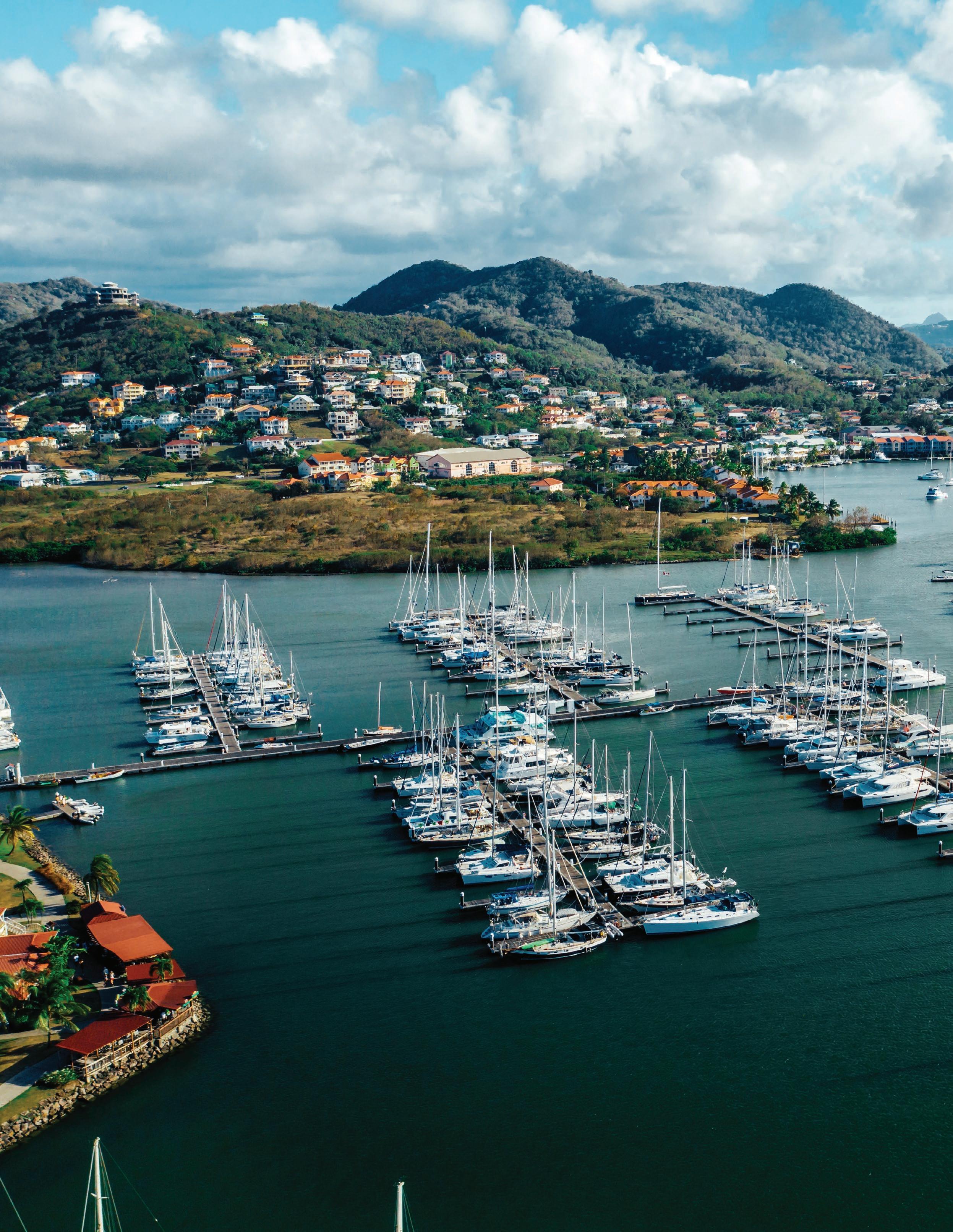
JUNE / JULY 20 23 CARIBBEAN COMPASS PAGE 25 DISCOVER SUMMER
Falmouth Freddy and the Cruising Kanes
by Niamh McAnally
Chapter 1: BVIs Jost Van Dyke
Charlotte Kane didn’t like heights, but her petite French figure meant that she was the one forced to go up the mast to fetch the parrot. The bird belonged to the Kadey-Krogen next to their monohull but had taken up residence on their second spreader. If she hadn’t been fixated on how the harness dug into her thighs, the 15-knot wind whistling in her ears, and that she had barely slept, she might have appreciated the view over the BVI’s Jost Van Dyke. The Soggy Dollar lay to port, Foxy’s off the starboard bow. But she did hear a distinct clunk. The trawler had hauled anchor.
From the deck below, her husband, Logan, yelled across at the skipper: “Oi. What about your bird?”
“You keep it,” the man yelled back. “It will bring you luck.”
“Good or bad?” Logan joked, having no intention of minding a damn parrot.
“His name is Falmouth Freddy.” With that, the boater gave a wave and motored out of the anchorage. Logan watched, dumbfounded. Ever since Christmas Day, sailboats, trawlers and private yachts had been crowding into this small anchorage all desperate to get a spot in time for tonight’s legendary New Year’s Eve party at Foxy’s. Yet this guy had just abandoned his annoying pet and taken off.
“’Allo! ‘Allo!”
“Oh, sorry Char.”
“Bring me down.”
Logan carefully payed out the halyard and lowered Charlotte to safety; Freddy remained aloft.
“Quel imbécile!”
“Who, him? Or the parrot?”
“Both!”
“Agreed. Look at the hole he opened up. God knows how many more boats will pile in on top of us.”
Within twenty minutes the gap had been filled, not with just one boat, but with two. The second, a 50-foot Leopard, was so close they could have reached over and grabbed a wine and some hors d’oeuvres. No amount of begging the charter captain to relocate worked. No, he knew these waters better than anyone, had put out the correct amount of scope, and besides, his clients were staying onboard for the evening so he would be keeping watch. Logan gave up. There was no arguing with this dude. Plus, it was almost 2 p.m., he needed to get to work.
The pandemic had changed lives, his and Charlotte’s included. The mandatory exodus from offices to homes had re-set people’s thinking and enabled them to take a new look at the work/life balance. Logan, whose father had worked on Wall Street, had always been a savvy investor. Like many others cocooning at home, Logan delved into day trading. And he was good at it. Very good at it. If a computer and internet connection were all he needed then why remain in the city, or wait until retirement to sail away?
Instead, at age 53, Charlotte, 49, three children raised and gone, the pair of them had made the break. They’d bought the cutter-rigged sloop in Puerto Rico, a Caliber 40 long-range cruiser built on the west coast of Florida. Along with several other vessels that had been stored on the hard in Puerto Del Rey Marina in Fajardo during the summer of 2017, she had miraculously survived hurricane Maria with minimal damage. But the owners never returned; sold
her to the yard, who sold her to them. Once repairs and sea trials had been completed Logan and Charlotte had set off through the Virgin Islands.
Logan didn’t trade every day, didn’t have to, but today was one he couldn’t miss. The inventors of Solartop™, the revolutionary laptop every outdoor enthusiast coveted, were taking the company public. At last, here was a computer whose screen could be read in bright sunlight and whose battery was constantly topped up by the solar panel lid. Hoping a short trading day would make their IPO soar, they’d chosen to release the stock at 2 pm. Even so, Logan waited until 2:06 pm to buy in. Big. By 2:28 pm the stock had doubled. He watched the ride. Throughout the afternoon it dipped and rose as investors tried to gauge the top. Logan remained vigilant. He had strict rules on when to cash out. Too soon he’d leave money on the table, out too late he’d lose most of his gains, or worse. He reckoned he had another four minutes to go. Two minutes passed then:
BANG.
A powerful gust of wind swung the catamaran into their hull. Three things happened at once:
Falmouth Freddy flapped from his perch in a screech of feathers. Charlotte was thrown into the galley stove. And Logan’s computer flew from his knee crashing screen-first into the binnacle, then bounced off the wheel and landed on the cockpit sole.
Charlotte regained her balance and scrambled up the companionway. “ Ça va? Logan?”
“No no, no no, no!” Logan shouted. He was tapping every key. The screen remained black. “I’ve got to get out of the trade.”
“Here.” Charlotte grabbed her phone and thrust it at him.
He tried to bring up the app but the dots kept spinning. He rushed up on deck. The stern of the catamaran was alongside their forward quarter. Their bowsprit was buckled. Logan peered up against the afternoon sun. “Shit, the wi-fi extender’s loose.”
The charter captain looked down from the flybridge. “Hey. You dragged into us.”
“What? Are you kidding me? You hit us!”
“No, we didn’t.”
Logan didn’t have time to argue. “I need to use your internet, NOW.”
“Sorry, it’s for guests only.”
“You mother—”
“Logan, doucement.”
“What time is it?”
“4:01 p.m.”
Logan dropped his head and pounded his scalp with his fingers. “Too late.”
“Too late, too late,” the parrot mimicked from his new post on a stanchion.

“You!” It took everything Logan had not to grab the bird and fling it at the charter captain’s throat.
“How much were you in?” Charlotte asked.
“A lot.”
“How much?”
“An awful lot.”
And so it was, on this particular New Year’s Eve, Logan and Charlotte Kane dinghied ashore for Foxy’s party not knowing whether they were millionaires or paupers.
Installments of Falmouth Freddy and the Cruising Kanes will be published in upcoming issues of the Compass
Niamh McAnally is an Irish-born author known as The Writer on the Water. Many of her stories are inspired by her global travels on land and by sea. She and her husband Gary spent six years sailing through the Bahamas and the Caribbean islands (fortunately for them, without Freddy).
Her book FLARES UP tells the true story of why two middle-aged men rowed a 20-ft wooden boat 3,000 nautical miles across the Atlantic Ocean and how it affected their families. She has been shortlisted for The Vikki Orvice Award for New Women’s Sports Writing in the 2023 Sports Book Awards in association with The Sunday Times. Niamh hosts interactive “behind the scenes” presentations to various groups and book clubs.
To learnmore visit www.thewriteronthewater.com.

JUNE / JULY 20 23 CARIBBEAN COMPASS PAGE 26
DIGITAL
TAD RICHARDS
The bird remained aloft.
PAINTING BY
Climbing to Saba
Story and photos by Lynn Costenaro
If you’ve sailed the Northern Leewards or are planning to, there are resounding must dos. Whether your journey starts or finishes in St. Maarten, the go-to place for marine supplies and provisioning is the Simpson Bay Lagoon. You’ll never be at a loss for a fresh cold draft or conversation with the eclectic collection of cruisers at Lagoonies bar. Catch the prevailing easterlies and a few tacks later your next port o’ call is St. Barts where you can pick up a mooring outside Gustavia harbor. Don your best sunglasses to check the latest haute couture on rue de la République and hope to spy a celebrity in the process. You’ll want to drop anchor in Anguilla and dinghy into Johnno’s on Sandy Ground for Rum Punch Friday.



But look out, you’ll feel the presence of another island looming on the horizon an island seemingly forever capped with a cloud. Although most charter companies list it as off limits to bareboaters, with a bit of determination and decent conditions, this diamond in the rough offers an experience not found elsewhere. The island is called Saba just five square miles of top-tobottom nature, beckoning to be discovered. The Saba Conservation Foundation was established in the 1980s to protect the area from the peak of Mt. Scenery at 3,000 feet to depths of 200 feet beneath the waves.
Fewer than 2,000 inhabitants live within its charming villages nestled into the hillside, complete with excellent restaurants and off-the-beaten-path shopping. Hand-crafted knives, indigo-dyed wearables and hot glass baubles are a few keepsakes to be sought out. Jewel Cottage is a historic cornerstone of the village of Windwardside, where Zaid creates one-of-a-kind rings, bracelets and necklaces in gold and silver with certified gemstones. Visionary Mark

Johnson is the proud proprietor of this establishment that now boasts a sister store in the museum district of Amsterdam. Mark, an 11th generation welltraveled Saban, is blessed with the gift to blend old world charm within modern accommodations. He recently revamped the six double bungalows and an exquisite penthouse of the Cottage Club Hotel, where his years of travel collections are housed. Prices start at just $110/night standard cottage low season. Bareboaters on a budget can find El Momo Cottages chiseled into the cliffside of Booby Hill. These sleeping cottages were designed for those who prefer to spend their time out and about and only require a simple, clean resting place. Prices are in the $100/night range but offer a million-dollar view. Saba Island Premier Properties offers short term cottage and villa rentals but may also pique your interest at the reasonable prices to live in paradise. Without beaches, the island has been creative in attracting tourists while benefiting the local community. The Sea & Learn Foundation runs Create and Learn as two-week events of daily workshops offered four times per year. Each event showcases five different artists to introduce new artforms to visitors and the local community.
October is the time to Sea and Learn on Saba. This year’s event marks the 20th anniversary and promises to raise the bar once again. Visualize a TEDtalk style presentation but held at a restaurant in the rainforest or another charming venue.
—Continued on next page
JUNE / JULY 20 23 CARIBBEAN COMPASS PAGE 27 BOAT PAINT & COMPOSITES Time Out Boat Yard Saint Martin Next to the French Bridge Fiberglass + Epoxy & Polyester Resins Epoxy primer + Polyurethane Top Coat Phone: + (590) 690 221 676 info@boatpaintstuff com www.boatpaintstuff.com ANTIFOULING SPECIALIST: PPG Amron COPPERCOAT Permanent Antifouling (10 years and more…)
Panoramic view of El Momo and surrounding mountains
Hands-on learning is another facet of the month-long program. Dive with an octopus biologist to monitor camouflaging techniques; venture with an orchid expert to survey the endemics clinging to the island’s cliffs and windswept trees; night hike with a bat scientist to mist net in order to identify species and habitat threats. The scientists are part of the October school curriculum, taking kids out of the classroom and into nature to reinforce the value of this special island while providing new role models.

The rugged landscape is equally dramatic below the surface. A diver’s delight with renowned pinnacles, wall diving and gradually sloping reefs. Rendezvous diving or private charters can easily be arranged via seasaba.com. Ask anyone at the harbor to arrange a taxi up the steep hair-pin curved road. Twenty hiking trails of varied levels in 5 different climate zones leave you without an excuse to stretch your legs or plan a more exotic trek. From rocky desert tide pools to lush tropical rainforest, there are trails to suit your fitness level as well as your curiosity.

Saba changed flags numerous times in its Pirate of the Caribbean days, but has been Dutch since 1816. The Netherlands supports Saba from education and healthcare to infrastructure, with solar fields, impressive waste management, the world’s smallest international runway and soon a modern marina. In the short term, the island is working on ways to be more accessible to the yacht community with better communications and an electronic check-in system in the making.
Current access to the beautiful island of Saba from the sea is on the southwest shore of the island at Saba’s only port, Fort Bay Harbor. Arriving vessels are required to proceed to the harbor as soon as possible, clear customs and immigration and check in/out with the harbormaster to fulfill the required formalities. If customs and immigration are not available, proceed directly to the harbor office. The opening hours of the harbor office are from 6 a.m.-6 p.m. Every vessel is also required to check in with the marine park at its office, which is also located in Fort Bay. Contact the harbormaster on VHF channel 16 or the Saba National Marine Park office (+599 416 3295) for directions on anchoring, mooring use, or any other information you may require.
Consult the Fort Bay Harbor website for landfall and mooring details (www. sabaport.com). You’ll find the Cottage Club at www.cottage-club.com and El Momo Cottages at www.elmomocottages.com. And should you decide to extend your stay, Saba Island Premier Properties is www.sabaislandpremierproperties.com. Find out more about Sea and Learn at www.seaandlearn.org/seaandlearn2023.

JUNE / JULY 20 23 CARIBBEAN COMPASS PAGE 28 Continued from previous page
Nature field trips are popular with visitors to Saba.
A favorite Saba dive site, The Needle



JUNE / JULY 20 23 CARIBBEAN COMPASS PAGE 29 Save the Ocean, Protect Your Passion “Join us today, we need all hands on deck if we are to have a living, thriving ocean for future generations to enjoy.” Sailors and boaters, you witness firsthand the devastating threats that our oceans face such as plastic pollution, oil spills, and marine habitat destruction. Join Sailors for the Sea Powered by Oceana’s community of Green Boaters to take action to protect our waters. sailorsforthesea.org/Liz Scan to receive our Green Boating Guide
Liz Clark, sailor, surfer, and environmentalist
-
FRENCH FLAIR, SANDY BEACHES — AND BOATYARDS
 Story and photos by Lexi Fisher
Story and photos by Lexi Fisher
“We’re in FRANCE!” Katrina announced as we putted ashore in the dinghy to clear customs. I once again reveled at the fact that Europe, which usually feels so far away from the Caribbean, is just a half-day sail from Rodney Bay, St. Lucia. Well, the French territory of Martinique at least, with its imports and brand names, Paris fashions, and more stinky cheese than you can shake a baguette at. On its fringes Martinique is still a Caribbean island, with palm-flanked white sand beaches, tropical fruits, and clear turquoise waters. But travel inland a few dozen meters, or visit one of the many large shopping malls, and you’re suddenly swept into a world of designer clothing and fine wine. All of the Caribbean islands have a colonial influence, but while most others have gained independence, Martinique has been under French rule since King Louis XIII planted the flag in 1685, and shares deeply-rooted culture and customs with the European mainland.
One of the new things they mentioned that piqued our interest was the Yacht Club du Marin. Located in a modest, unassuming single-story house across the road from the Nautical Block, it is surrounded by a meandering garden of vines, orchids, and ferns. The large YCM sign at the front gate left no doubt that we had found the right place. We were greeted by Marie, the treasurer, on the nautical-themed verandah, complete with burgees and teak tabletops. Together with Pascal, the president, they create a warm and welcoming home away from home for all sailors. A library and office space adjoins the verandah and small, affordable bar where you sit amongst tropical foliage. The large backyard has a workshop with a verity of tools for most boat projects, and there is a small pavilion and stage for occasional yoga classes or live entertainment. The yacht club provides a space for sailors to host meals and events with visiting friends and family, has wifi, a book exchange, a computer, and storage space for luggage when you don’t have space on board. They encourage all sailors to apply for membership (60 Euros per person per year) and host a potluck meet and greet on the first Friday of every month.
As we picked up one of the 230 mooring balls in Le Marin, it had been almost exactly three years since I’d been in Martinique. The last time was in February of 2020, just before the world was thrust into the turmoil of Covid. I’d arrived on the same boat, Ti Kanot, and with the same crew — Chris Doyle, the original author of the Doyle Cruising Guides, and Katrina Kelshall, one of our ad sales representatives. Chris was now easing into his first year of full retirement while Katrina and I pounded the pavement visiting the sights and services, meeting with businesses, and updating the guidebook info.

Our tour began in Marin, where we found surprisingly few changes, and our first order of business was to meet with Douglas Rapier at Douglas Yacht Services, a friend and trusted source of local knowledge. Douglas, also easing into a well-deserved retirement, was joined by his team, MarieEugene, Hoelenn, and Meyne, who eagerly filled us in on what they knew of the local yachting establishments and services, both old and new.
Down the road in the Marina Mall most of the pre-Covid restaurants had persisted, with an interesting addition. O’Wax by Boko Koncept, right in the center square of the mall, makes and sells pre-made desserts and entrees, freshly squeezed juices, dips and tapenades beautifully packaged in large glass jars, so you can see all the delicious sauces and ingredients. Mushroom risotto, scallops in a creamy sauce over rice, and vegetarian lasagne are among the dozen or so mains, plus tapas or appetizer options like babaganouch, olive tapenade, and pates. You can buy them to take home and heat, or pay a service fee to sit and enjoy a meal there. They also have locations in Fort de France and Ducos. After about a week in Marin we made the short passage south, past the conspicuous Club Med on the peninsula, to the picturesque anchorage of St. Anne. The long strip of white sand beach backed by dense palms was a welcome sight after the urban marina landscape of Marin. A few restaurants ashore had turned over. On the beach, Filet Bleu is now Bao Beach, a chic beach hangout with sun loungers and cocktail tables in the shallow water. It is more expensive than the other nearby restaurants, but has a nice ambiance with beach umbrellas and fancy blended cocktails. You need to have a meal to use the sun loungers, however, and the customer service is quite...relaxed.
There is no shortage of dining options along the beach, most of which open up in the afternoon to serve lunch, cold beer, and beachfront cocktails. Quite a few are small food truck operations, mostly serving local creole dishes, bbq, and accras, or fritters.
—Continued on next page
JUNE / JULY 20 23 CARIBBEAN COMPASS PAGE 30
MARTINIQUE
Beachfront boardwalk décor in Les Anses d’Arlet
Staff of the new app-based provisioning service, Appel a Tous, making a delivery
Continued from previous page
Hunger satisfied, we headed north to Grand Anse d’Arlet. The town has had a tumultuous relationship with yachting, twice having filled the bay with moorings and banned anchoring, just to have the mooring top lines go missing. We managed to tie onto one of the few remaining mooring balls, although from the number of yachts at anchor it seems that anchoring is no longer prohibited. You shouldn't have a problem finding a mooring block to tie to if you’re willing to dive for it.
Grand Anse d’Arlet is a quaint town, where the narrow main road divides small, brightly-colored wooden buildings from the line of beach restaurants where you dine with your toes in the sand. It’s worth taking the 30-minute hike over the hill to Les Anses d’Arlet, arguably the most picturesque beachfront village in Martinique. The tall spire of the church towers over the base of the dock, creating a great sense of symmetry and grandeur. Flanked by gazebos roofed in red clay tiles, the waterfront promenade is beautifully landscaped, with interesting sculptures and vivid bougainvillia flowers cascading over old brick walls. Like Grand Anse, it is very much a tourist town where people come to lounge on the beach and snorkel. If you’re looking for a more secluded anchorage, head north to Anse Noir and Anse Dufour, two rural bays where the sound of tree frogs and crickets punctuate the evenings. There are very limited dining options though, and fishermen may ask you to move in the morning, but the snorkeling, especially in the cave between the bays, is wonderful.
Over in the hustle and bustle of the capital, Fort de France, we got news that the yacht services compound in Baie de Tourelles had been taken over by the Maxi Marine group and is now operating under the name Maxi Boat Yard. They have brought in all new equipment, including a 75-ton travelift and a forklift for smaller boats. A series of a dozen or so new power boat lifts has been installed, and they have a large fishing store, chandlery, and workshop. Boats with a draft of 9 feet or less can come alongside, and artisans and engineers can do everything you need.

In Fort de France we finally got to try out a new provision service called Appel a Tous. It is an app-based service that does grocery delivery right to your boat at anchor, on a mooring, or on the dock, in all of the south coast bays as well as the Trois Islet area. They have a large inventory that features many local products and fresh produce. Curated baskets according to number of people and length of trip make it easy to provision for a charter. They are sailors themselves and understand the types of products yachtspeople are looking for. Frozen and refrigerated items are delivered in insulated bags and coolers, and ordering is quick, easy, and affordable—the delivery fee is just five Euros. They also sell their wonderfully colorful branded merchandise, as well as our cruising guides. Simply download the app, fill your cart, drop a pin in your location, and someone in a brightly-patterned uniform will make the delivery. They plan to expand their operations to other islands.
Continuing north, we made our way to St. Pierre, which sits at the base of the Mount Pelee volcano. There is a science center (The Centre de Decouverte des Sciences de la Terre) dedicated to the famous 1902 eruption, which killed the entire population of 30,000 people in an instant, except for a single survivor, Louis-Auguste Cyparis, who was jailed in a stone cell. The science center is about a 20-minute walk from town and is a worthwhile visit. They now have guided audio tours in English or French that you can access through your smartphone by scanning a QR code. There is a large theatre upstairs where an immersive 50-minute film about Mount Pelee and the other regional volcanos is shown. It is in French, but they will put on English subtitles if you ask.
Back in town, the recently-opened Creole Arts Cafe is located in the very first building to be rebuilt after the 1902 eruptions. It was rebuilt with extra fortifications to withstand future eruptions, including a safe room that looks a lot like Cyparis’ jail cell. The building has now been turned into a charming cafe and art gallery, where you can browse local handicrafts, jams, and soaps, sip coffee or fresh juice, use the WiFi, or grab a quick pre-made lunch.
We made one final grocery run, and as we sailed away from under the shadow of Mount Pelee I left Martinique with a new appreciation for the volcanic forces of nature, and with the largest wheel of brie I’ve ever seen.
Lexi Fisher is a Grenadian-born travel writer and the CEO of Doyle Guides, Chris Doyle’s popular series of sailing guides.
JUNE / JULY 20 23 CARIBBEAN COMPASS PAGE 31
Incredibly Useful Galley Appliances that Cruisers Actually Use
By Joyce Gauthier
When space is at a premium, every item brought onto a cruising boat must be carefully selected. The galley is no exception. Choosing galley items depends on space, the draw on electricity, and how often you will use a given item. As technology evolves, so do the items in our galley. Long gone are the days of struggling to put a meal together with archaic galley tools. These gadgets turn a cruising boat from “roughing it” into a gourmet kitchen.
Stovetop Pressure Cooker

A few years ago, the Instant Pot was all the craze. My social media feed was buzzing with fast and easy meals, all with the press of a button. I live on a monohull. An Instant Pot would dominate my counter space. The compromise…a stovetop pressure cooker. I purchased my stainless steel Prestige pressure cooker on Amazon for $65. This pot reduces propane use along with saving time. I can have rice in less than ten minutes, mashed potatoes in under 15, and I laugh in the face of dried beans. My pressure cooker can be used as a regular pot, adding to its versatility. I make my morning oatmeal, popcorn, and soup. I use it to reheat leftovers. It’s also easy to put in a bag or wrap in a towel to transport warm food to cruiser happy hours and potluck dinners. The stainless steel Prestige will work on an induction top. No matter what type of stove you have, it will be compatible.
Pros:
• Can be used on any type of stove.


• Doubles as a pressure cooker or regular pot.
• Travels easily, keeping food hot for transport.
• Can be purchased in various sizes (2L, 3L, 3.5L, 4L, 5L, 6.5L).
Cons:
• It’s heavy.
• There is a learning curve. I had to do some online research to figure out how to use it.


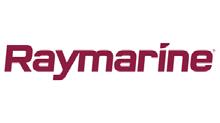

• Requires manual temperature adjustments while cooking.
Who needs this:
Boaters who are looking to save space and don’t have a battery bank big enough to power an electric pressure cooker. If you eat hearty vegetables and grains, this is an excellent pot to cut down on cooking time and propane use.
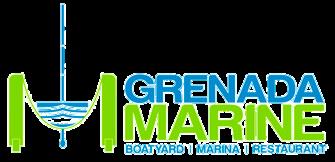


Instant Pot
The stovetop pressure cooker’s more famous cousin is the Instant Pot. It is a countertop electric pressure cooker that rose to stardom in 2016. The Instant Pot costs $80 and up (depending on the model) and is available at Amazon, Target, or Williams-Sonoma. While I find it too bulky and power-hungry for my needs, and lacking the versatility of my little stovetop pot, Gwen Johns from Abroad Reach Travel feels otherwise. “I love my Instapot because it significantly cuts down on cook times and propane use. I’m also able to place it in the cockpit so that all of the heat is kept outside.”As a full-time liveaboard, Gwen has learned how to use solar power to her advantage when running the Instant Pot. “On good solar days, I can prep dinner in the afternoon with the ‘extra’ solar production once our batteries switch to float.”
—Continued on next page
JUNE / JULY 20 23 CARIBBEAN COMPASS PAGE 32
JOYCE’S LIVEABOARD HACKS
PHOTO COURTESY OF @ABROADREACHTRAVEL 1-473-443-1667 ONSITE AMENITIES Diesel Fuel Free Wifi 24 Hour security Clean Restrooms, Showers and Laundry Laura’s Restaurant Island Water World Chandlery Transportation to town twice a week Dockage REFITS, REPAIRS, and MAINTENANCE ABYC, Raymarine & Volvo certified technicians Electronic Installations and Repairs Electrical, Woodworking, Rigging Painting: below and above the waterline Welding, Metal Fabricatio n, Machining Work Composite Repairs SERVICES Haul and Launch Services up to 32 ft beam Insurance approved hurricane plan, including tiedowns Long and short-term storage Controlling depth of 12 ft at low water WE ARE DEALERS info@grenadamarine com Try Us,You'll Like Us!
Gwen uses her Instant Pot in the cockpit to prevent the galley from heating up.
Continued from previous page
She noted that the Instant Pot uses 1000 watts in the most commonly used modes. Gwen and her husband Andy stow the Instant Pot and other bulky items in their pilot berth. They converted the area into a storage space. That way, it is safe and secure while they are out sailing their Tartan 37.
Pros:
• Set it and forget it.
• There are endless Instant Pot recipes available online.
• Doesn’t use propane.
• Comes with a steaming basket.
Cons:
• Takes up a fair amount of counter space.
• If used inside, it heats up the cabin.
• Uses power.
Who needs this:
If you are a busy boater who prefers to make one-pot meals, the Instant Pot is the appliance for you.
Air Fryer
Kristi Wynn on S/V Sunwise has a combo air fryer and pressure cooker on her Hunter 38. The Ninja Foodie Programmable 10-in-1 is available at Target for $120. Her favorite meal to make in the air fryer is fried and breaded fresh fish. She also loves making fruit tarts. It does use a fair amount of power, so Kristi uses the air fryer while the motor is running or when it is a sunny day and the solar is topped off. Kristi says, “the main benefit of the air fryer is that we don’t have to get propane all the time.”

Pros:
• Double duty design saves space by having an air fryer and pressure cooker in one.
• No need for propane.
• Makes a variety of meals, sides, and desserts.

Cons:
• Uses a fair amount of power.
• Can take up precious counter space.
Who needs this:
If you are the type of cook that likes to switch it up often, the Ninja Foodie is for you. It’s a versatile appliance that can make all types of meals, sides, and desserts.
All-in-one Electric Ovens
Electric ovens are diverse. Some models include many settings, allowing cruisers to wave bye-bye to propane. Emily and Cole Crews on S/V Adventure
Crews replaced their propane oven with a Breville oven combo. It does everything from air frying to dehydrating and can be found for $400 at Williams-Sonoma, Amazon, and Best Buy. Emily and Cole favor the roasting setting that they use for cooking up whole fish and lobster. They also enjoy roasting vegetables. To satisfy their sweet tooth, Emily uses the baking setting to make double chocolate brownies.
They do have to be conscious of power. Cole says, “based on the electrical circuit we decided to plug the Breville into, we now have to be careful not to use the microwave at the same time or we will trip the breaker.” The versatility of the oven leaves temperamental propane ovens in the dust. The tradeoff is, the electrical system has to keep up.
Pros:
• Can completely replace a propane oven.

• Has many settings (baking, roasting, dehydrating).
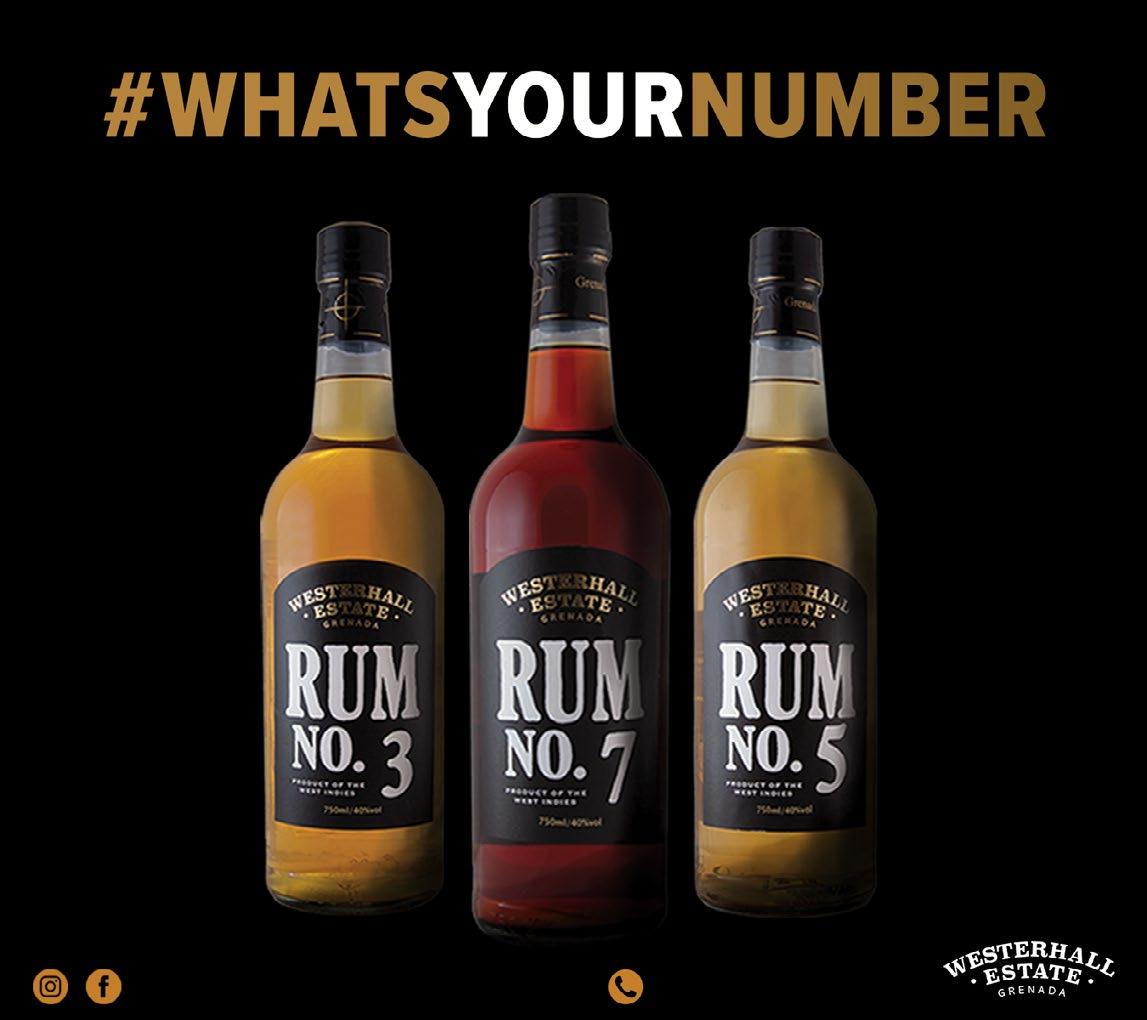
• Looks sleek with its brushed stainless-steel construction.
Cons:
• Takes up a large amount of space.

• Requires a large amount of electricity.
• No air fryer setting.
Who needs this:

Boaters who are looking to replace a propane or alcohol oven. If you find yourself roasting and baking often and have a large battery bank, the Breville may be the oven for you.
Galley appliances have come a long way over the years. Technology advancements have resulted in ingenious devices. Cooking on a boat shouldn’t be a chore, but a fulfilling part of the cruising lifestyle. With these appliances, the galley becomes a palette for creativity and fun.
Capt. Joyce Gauthier is a full-time liveaboard on a 1974 Camper Nicholson ketch, S/V Gavia. She is a regular contributor to windandwellness.com, a blog about health and wellness for cruisers. She loves creating original dishes in the galley, lounging on white sandy beaches with her husband Matt, and snuggling with her shih tzu, Loki. With the June/July issue, Joyce joins the Compass team, contributing her regular column, Joyce’s Liveaboard Hacks.
JUNE / JULY 20 23 CARIBBEAN COMPASS PAGE 33 HEY, READERS! Visit our website at caribbeancompass.com or just scan the QR code BELOW and enter your email address — it’s as easy as that!
PHOTO COURTESY OF @THEADVENTURECREWS
Emily uses her combo oven for making granola, a perfect topping for yogurt.
CALENDAR
June 2023
1-4 Martinique Boat Show, Fort de France, Martinique.
2 – 3 Caribbean Sun Splash, Willemstad, Curaçao. www.sunsplashevents.nl
3 St. Maarten National Dinghy Championship. www.smyc.com
3 – 4 Clarkes Court Boatyard and Marina Regatta, Clarkes Court Bay, Grenada. www.facebook.com/clarkescourtmarina
3 – 4 KLM Aruba Marathon, Oranjestad, Aruba. klmarubamarathon.com/en
4 FULL MOON
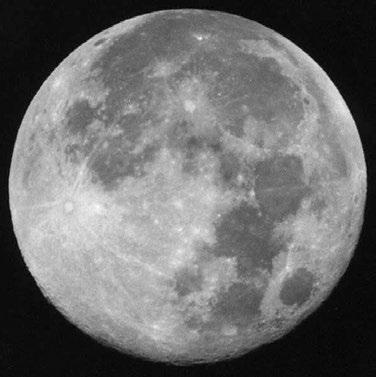
5 World Environment Day
8 World Oceans Day
8 Holiday in some places (Corpus Christi)
8 Hopkins Mangu Festival, Hopkins, Belize
9 – 12 Festival del Jíbaro Comerieño, Comerío, Puerto Rico
12 – 17 Bonaire Rum Week
12 – 18 International Opti Regatta, St. Thomas. www.stthomasyachtclub.org
18 Lowell Wheatley Anegada Pursuit Race. www.royalbviyc.org
19 Public holiday in Trinidad & Tobago (Labour Day)
19-25 Bonaire Yoga and Wellness Week
21 Summer Solstice
21 Fête de la Musique, all French West Indies
22 International Choral Festival Costa Rica for Peace
22 - 24 St. Kitts Music Festival. www.stkittstourism.kn/music-festival
22 -25 Love Fest Costa Rica 2023
24 Kallaloo Festival, Charlotte Amalie, St Thomas
25 - 26 Coffee & Chocolate Expo, Puerto Rico Convention Center, San Juan
29 Fisherman’s Birthday, local boat racing in many coastal communities
30 Peter Perkins Class A Boat Race, Anguilla
July 2023
1 Public holiday in BVI (Virgin Islands Day) and in Suriname (Emancipation Day)
1 Firecracker Regatta, Tortola, BVI. www.westendyachtclubbvi.com
1 International Reggae Day
2 Public holiday in Curaçao (Flag Day)
3 FULL MOON
3 CARICOM Day, public holiday in some places
3 – 4 St. Vincent Carnival ‘Vincy Mas’
3 – 9 Fiesta del Fuego (Fire Festival), Santiago de Cuba
4 Public holiday in Puerto Rico and USVI (Independence Day), and in Cayman Islands (Constitution Day). Fireworks celebration in Aruba.
7 – 15 Belize Culinary and Culture Tour
9 – 17 Dominica Dive Fest. www.discoverdominica.com
10 MiHabana Baila Festival, Havana
10 Mango Melee and Tropical Fruit Festival, Frederiksted, St Croix
14 Public holiday in French islands (Bastille Day), yole races in Martinique
16 Cabarete Kite Festival, Dominican Republic
16 – 22 Reggae Sumfest, Jamaica www.reggaesumfest.com
17 – 18 St. Lucia Carnival www.carnivalstlucia.com
25 Public holiday in Puerto Rico (Constitution of Puerto Rico Day)
26 International Mangrove Conservation Day
26 Public holiday in Cuba (National Revolutionary Festival)
29 – 1 Aug (TBC) Carriacou Regatta www.puregrenada.com
TBA Tour de Martinique des Yoles Rondes. tourdesyoles.com
TBA Tobago Heritage Festival
All information was correct to the best of our knowledge at the time this issue of Compass went to press — but plans change, so please contact event organizers directly for confirmation.
If you organize a sailing or boating event not listed here that you’d like to have included in our monthly calendars, please send information two months before the event date(s) to editor@caribbeancompass.com
PICK UP!
ST. GEORGE’S
Grenada Yacht Club
Island Water World
Port Louis Marina
Marina Office
Victory Bar
SOUTH COAST
Budget Marine
Clarkes Court Boatyard & Marina
North Yacht Shop
Grenada Marine
Le Phare Bleu Marina
Nimrod’s Bar
Secret Harbour Marina
Spice Island Marine
Turbulence Sails
CARRIACOU
Harvey Vale
In Stitches
Pio’s by the Bay
Tyrrel Bay Marina.
Las Iguanas
The Original Slipway
Carriacou Marine shop
Crazy Beach Corner
Lambi Queen
Barakena
Carriacou Gallery Bistro
La Qua Supermarket
After Hours
Budget Marine
L'Esterre
Paradise Beach Club
Brunswick
Dave's Store
Hillsborough
Kayak Kafe
Jupa
Tourism Board
Patterson’s
Carriacou Museum
Bread Basket
Windward
Pizza Meh Heart
Malick’s Enterprises
Ninja Corner shop
Belmont
Casada Bay Resort
MERIDIAN PASSAGE OF THE MOON
JUNE
Crossing
& JULY 2023
Water generally tries to run toward the moon. The flood tide starts running eastward soon after moonrise, continues to run east until about an hour after the moon reaches its zenith (see TIME below) and then ebbs westward. From just after the moon’s setting to just after its nadir, the tide runs eastward; and from just after its nadir to soon after its rising, the tide runs westward. The first hour after moonrise, the westerly current is barely negated. The second hour the flood tide is stronger, the third and fourth hour it’s strongest, then it eases off in the fifth and sixth hours. The maximum tide is three or four days after the new and full moons.
JUNE / JULY 20 23 CARIBBEAN COMPASS PAGE 34
the channels between Eastern Caribbean islands, an ebb tide carries you off to leeward and a strong flood tide creates lumpy seas, so crossing with a favorable tide is faster and more comfortable. The table below, showing the local time of the meridian passage (or zenith) of the moon for this month, will help you calculate the tides.
June 2023 DATE TIME 1 2158 2 2250 3 2347 4 0000 FULL MOON 5 0049 6 0153 7 0257 8 0358 9 0454 10 0545 11 0633 12 0719 13 0805 14 0852 15 0940 16 1031 17 1123 18 1217 19 1310 20 1402 21 1451 22 1536 23 1619 24 1700 25 1740 26 1821 27 1902 28 1947 29 2036 30 2130 July 2023 1 2230 2 2334 3 0000 FULL MOON 4 0040 5 0144 6 0244 7 0339 8 0429 9 0517 10 0604 11 0650 12 0738 13 0827 14 0919 15 1012 16 1105 17 1157 18 1246 19 1333 20 1417 21 1458 22 1538 23 1618 24 1658 25 1740 26 1826 27 1916 28 2012 29 2113 30 2218 31 2324
Ahoy, Compass readers! When in Grenada, including Carriacou, pick up your free copy of the Caribbean Compass at these locations (advertisers in bold):
THE CARIBBEAN SKY: FREE SHOW NIGHTLY!
Mid-June to Mid-July
Story and Photos by Jim Ulik
A rumble was rapidly increasing in intensity. Suddenly a massive ball of flames passed overhead. In less than a second a blinding explosion filled the early morning sky. The blast of an atomic bomb paled in comparison. The aftermath of the blast left widespread destruction. Everything standing for 800 square miles was flattened. Humans and wildlife near the explosion were gone. This time, however, this time the devastation was not caused by man vs. man. Nature had given the Earth a blow. The above explosion is estimated to be equivalent to 2.8 million tons of TNT. Or look back at any photo or film footage of the nuclear explosion over Hiroshima and multiply that by 185. Some computer models put that figure at over 9 million tons of TNT. The event above was not the asteroid or comet that hit Earth subsequently killing the dinosaurs. The incident occurred on June 30, 1908, over Siberia (Tunguska event).
Fortunately the area was sparsely populated. Traveling at 33,500 mph (54,000 kph) the meteor that generated that blast was 120 feet (36 meters) in diameter and weighed in at 220 million pounds (100 million kg). If a comparable asteroid made impact offshore any of the Caribbean islands a 1,300-foot-wide 271 feet deep crater could be created on the sea floor. It would enter the atmosphere at 35,000 mph slowing to 22,500 mph as it impacts the sea. Then look out for the 500-foot-tall tsunami. For a visual perspective see a regional comparison in Image 1. The zone of land impact is circled in red. Five km outside the impact (yellow circle) would record wind speeds of 583 mph (261 m/s) and a tsunami wave that could be up to 54 feet (16.5 meters) in height.

A well-preserved result of impact is the Barringer Crater in Arizona. This crater, which hit 50,000 years ago. was created by an iron asteroid 100 to 165 feet (30 to 50 meters) in diameter. The fireball extended 6 miles (10 km), large animals were killed or wounded 15 miles (24 km) away. The winds at impact would exceed 621 mph (1000 km/h) hurricane winds would be felt for 25 miles (40 km). The Crater measures nearly one mile (1,600 meters) wide and 570 feet (174 meters) deep. Impacts can happen anytime or anywhere in the world.
Currently most of known NEAs or Near-Earth
Asteroids are smaller than 3,300 feet (one kilometer). The largest potentially hazardous asteroid currently known is between two to four miles (3 to 6.5 km) in diameter. The diameter of the object that killed the dinosaurs is estimated to be six miles (10 km) in diameter. Happy Asteroid Day coming June 30!
Friday, June 16
The celestial lineup this morning in the predawn sky will be piloted by Jupiter. Following Jupiter, a shooting star or two may pass through from the Daytime Arietids meteor shower. Trailing behind are the Seven Sisters, a thin waning crescent Moon, Mercury and then Aldebaran.
Saturday, June 17
Over the last few mornings Mercury has
JIM ULIK
continued to appear lower in the eastern sky. In about a week it will become lost in the glare of the Sun. During this slide eastward it will take position near Aldebaran today and tomorrow.
Sunday, June 18
Today is the New Moon. It is located on the same side of the Earth as the Sun. This is the best time of the month to observe faint objects in the night sky. The only visual interference comes from the multitude of artificial lights illuminating the night sky.
Tuesday, June 20
The Moon has passed through Gemini on its way to Cancer. Tonight it will appear near Pollux, the brightest star in the constellation of Gemini. Pollux is the first bright star off the illuminated side of the Moon.
Wednesday, June 21
Need to redirect your solar panels? For those inclined to do so the panels need to be adjusted to face the Sun every sunlit hour (or even 15 minutes) of every day. But that won’t happen unless the panels are connected to a solar tracking device. Anyway, today is the June or summer solstice and the first day of summer. The Sun is directly over the Tropic of Cancer at 23.44 degrees north latitude. Tilt your panels toward north. To direct your panels the rest of the day, the Sun rises at 65 degrees ENE and sets at 295 degrees WNW.
This evening the waxing crescent Moon, Venus
and Mars will share the sky above the western horizon and the constellation Cancer.
Monday, June 26
The Moon is at its first quarter phase today. It will rise at 0011h (all times are given as Atlantic Standard Time (AST) unless otherwise noted).
The Neap tide generated by the first quarter Moon will begin to flow in about 50 minutes before moonrise.
Tuesday, June 27
The June Bootids meteor shower peaks tonight. This variable shower is active June 21 – July 02. The shower can produce up to 100 meteors per hour. The debris field left behind by the comet enters the Earth’s atmosphere more north. Less debris will enter above the Caribbean making the meteor rate closer to 33 meteors per hour.
There is a close approach between the Moon and Spica. Follow the Moon’s terminator line south to find Spica. The terminator line separates the light and dark sides of the Moon.
Friday, June 30
Asteroid Day is observed annually to mark the date of Earth’s largest asteroid impact in recorded history, the Siberia Tunguska event.
—Continued on next page
JUNE / JULY 20 23 CARIBBEAN COMPASS PAGE 35
An example of the close-in impact area of an asteroid similar in size to Tunguska’s.
GRAPHIC BY
Continued from previous page
“Asteroid Day was co-founded by astrophysicist and famed musician Dr. Brian May of the rock group Queen, Apollo 9 astronaut Rusty Schweickart, filmmaker Grig Richters, and B612 Foundation President Danica Remy, to educate the public about the importance of asteroids –their role in the formation of our solar system, their impact in space resources and the importance of defending our planet from future impacts.” asteroidday.org
The Moon has been captured by the claws of Scorpius on its transit east. Four degrees east of the Moon is “anti-Ares,” the rival of Mars. Antares may sometimes be confused with Mars because it is similar in color and brightness. Tonight Mars can be found in the west northwestern sky close to Venus.
Saturday, July 01
Mars will remain close to Venus over the next few days. However, tonight the god of war makes its closest approach to the goddess of love. They will slowly begin to separate tomorrow.
Monday, July 03
The Moon will be located on the opposite side of the Earth as the Sun and its face will be fully illuminated. The Moon will be near its closest approach to the Earth. This is the first of four supermoons for 2023.

Thursday, July 06
The constellation Aquarius begins to rise in the southeast. In a few minutes you will notice the close approach between Saturn and the Moon as they begin to appear over the horizon.
Monday, July 10
You can’t miss Venus tonight. Even though Venus is illuminated less than 25 percent it has reached its greatest brightness in the night sky for 2023. Venus will gradually exit the evening sky until it disappears in early August.

Tuesday, July 11
The Moon makes a close approach to Jupiter after midnight. In 24 hours the Moon will shift position to the opposite side of Jupiter.
MARIGOT BEACH CLUB
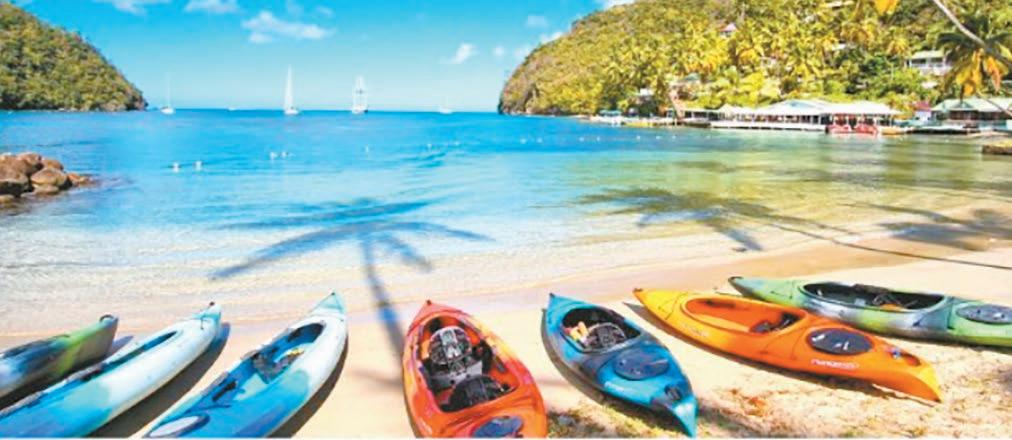
In the News:
Rocket Lab New Zealand is scheduled to launch two NASA TROPICS CubeSats prior to the Atlantic hurricane season.

These CubeSats will add to the current constellation of TROPICS to supply more data on temperature, precipitation, water vapor, and clouds providing insight into storm formation and intensification.
Jim Ulik sails aboard S/V Merengue.
Marigot Bay, 00123 Marigot Bay Saint Lucia
OPENING TIMES FOR RESTAURANT 7AM-11PM Daily
Ferry operates from 7AM-11PM Daily
MEAL TIMES
Breakfast: 8AM-10:30AM
Lunch: 11:30AM-5:30PM
Dinner: 6:30PM-9:30PM
Bar opens till 11:00PM
Happy Hour Daily from 5PM-6PM (2 drinks for the price of one on selected drinks, beers, wines, gins, rums, cocktails, rum punch, vodkas, etc.).
Outside Patrons who spend US15.00 or more, per person, at the restaurant or bar will have access to the resort facilities, such as the pool, sun loungers & complimentary Wi-Fi. Reservations are recommended, however walk-in customers will be accommodated as well.
Call 1 (758) 451-4974 or email us info@marigotbeachclub.com. We can also be reached via Instagram @marigotbeachclub @doolittlesrestaurantandbar
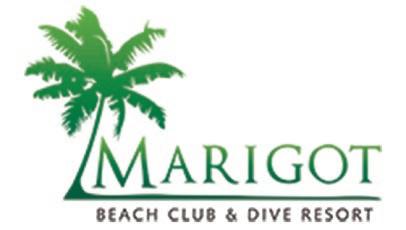
RESTAURANT DAILY SPECIALS
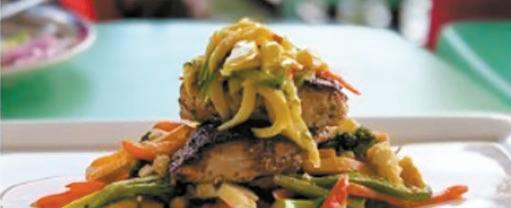
Indian Cuisine Special every Sunday evening
Thai Cuisine Special every Thursday evening
Sushi Special every Friday evening
BBQ Night Special every Saturday evening
RESORT OFFICE HOURS
Sunday-Saturday 7AM-11PM
To Book your resort stay please send inquire to info@marigotbeachclub. com . We can also be reached via Instagram @marigotbeachclub or visit our web page www.marigotbeachclub.com
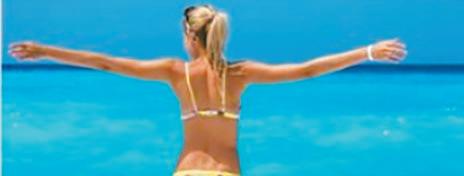
JUNE / JULY 20 23 CARIBBEAN COMPASS PAGE 36
Above: Terrain before asteroid impact Below: Barringer Crater post-impact
PHOTO BY JIM ULIK
Caribbean Compass Market Place

Azores Saint Kitts & Nevis SVG
MID ATLANTIC YACHT SERVICES
PT-9900-144 HORTA / FAIAL, AZORES
Providing all vital services to Trans-Atlantic Yachts!
Incl. Chandlery, Charts, Pilots, Rigging EU-VAT (18%) importation

Duty free fuel (+10.000lt)
TEL +351 292 391616 FAX +351 292 391656 mays@mail.telepac.pt www.midatlanticyachtservices.com




Grenada
SVG
WE OFFER:



NEILPRYDE Sails Grenada
Check out our website or contact us directly for a competitive quote on rugged and well-built sails that are well suited to the harsh environment of the charter trade and blue water cruising.
Jeff Fisher – Grenada (473) 407 6355 www.neilprydesails.com

• Grocery Shopping / Personal pick-up (with delivery to your dock)
• Argyle International Airport direct shuttle (starting from EC$30)

• Bill payments
LAC Services App (Google App Store)
Tel: (784) 527-3082, (784) 492-9983 E-mail: lacservices@lacsvg.com
Trinidad
THIS COULD BE YOUR MARKET PLACE AD
shellese@caribbeancompass.com
JUNE / JULY 20 23 CARIBBEAN COMPASS PAGE 37
page
continued on next









JUNE / JULY 20 23 CARIBBEAN COMPASS PAGE 38
Estate
Venezuela LIVE THE DREAM FOR SALE OURCARRIACOU.COM/WOW CARRIACOU REAL ESTATE Land and houses for sale For full details see our website: www.carriacou.net Contact: islander@spiceisle.com Tel: (473) 443 8187 Caribbean-wide McINTYRE BROS. LTD. True Blue, St George’s Grenada Call 1 (473) 444 3944 macford@spiceisle.com Honda, Mazda and Ford Dealership Vehicle Sales & Service Book your Car rentals & Island Tours with us Discover Grenada with Caribbean Horizons Tours & Services info@caribbeanhorizons.com www.caribbeanhorizons.com 2 & 4-Stroke Engines Genuine Parts & Service Yamaha Certified Technicians Duty free deliveries & reliable service for Yachts GRENADA Click here to read a sample or to order: https://amzn.to/2ZaLfzw ILLUSTRATION BY SCOTT MASEAR MARKETPLACE ADS AVAILABLE FROM 1-3 INCHES US$40 PER INCH Pre-paid by the 10th of the month: E-mail: shellese@caribbeancompass.com
Real
Market Place Cont.
BEQUIA, LAWLER HILL Over 2 acres of mature grounds with fabulous views overlooking Port Elizabeth, Lower Bay, Friendship Bay and Mustique. Property includes a charming home plus a cottage hideaway. Could be sold separately or together. Price negotiable. Contact T. M. Zoffoli, Tel: (774) 563-0240 E-mail: austintiare860@gmail.com
BEQUIA - ISLAND PACE REAL


ESTATE 43,560 sq/ft + acre lots, Ocean Ridge estates, North Bequia. US$100,000 & up, US$2.50/ sq/ft & up. Tel: (784) 493-4711 E-mail: emmett@islandpace.com
ST. VINCENT & THE GRENADINES, VILLA BEACH Beach front living for home or an investment. 3 separate self-contained units. 7 bedrooms, 7 en-suite bathrooms, 3 half bathrooms. Building 6,864 sq/ft & land 13,490 sq/ft., views of the Grenadines. US $1,100,000 OBO. Tel: (784) 497-0000 / 593-9922 E-mail: properties.svg@gmail.com


Website: islandpropertiessvg.com

48’ SPRONK 1973
Custom built day charter catamaran, perfect boutique hotel day cruiser, capacity 20 pax. Completely refurbished 2016 Trinidad, new outboard powered 75 hp Yamaha engine w/ hydraulic sledge, twin helm. Raymarine instruments, chartplotter, electric head. Outboard & dinghy w/ Davits. Lying Canouan Island, St. Vincent & the Grenadines. US $155,000 OBO

Tel: (784) 533-2462
42’ HARLEY SUPERSTAR
Kevlar hull, twin Cummins 6 CTA. Arneson surface drives, comfortable cockpit seating for 8, front padded sunbed. Interior "V" berth, small galley w/ stove, fridge, sink. Marine electric head, shower, US$65,000.00
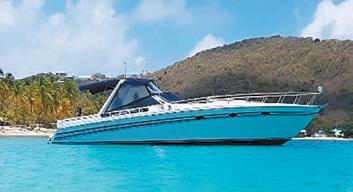
Tel: (784) 533-2462
HEY READERS, GET CARIBBEAN COMPASS BY EMAIL!
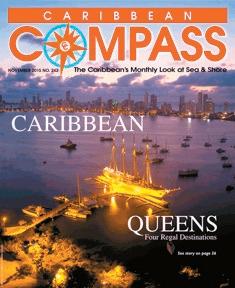
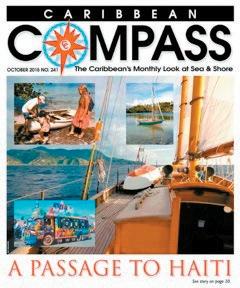

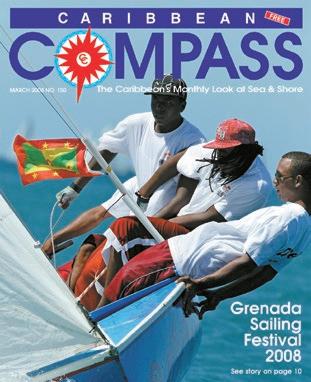
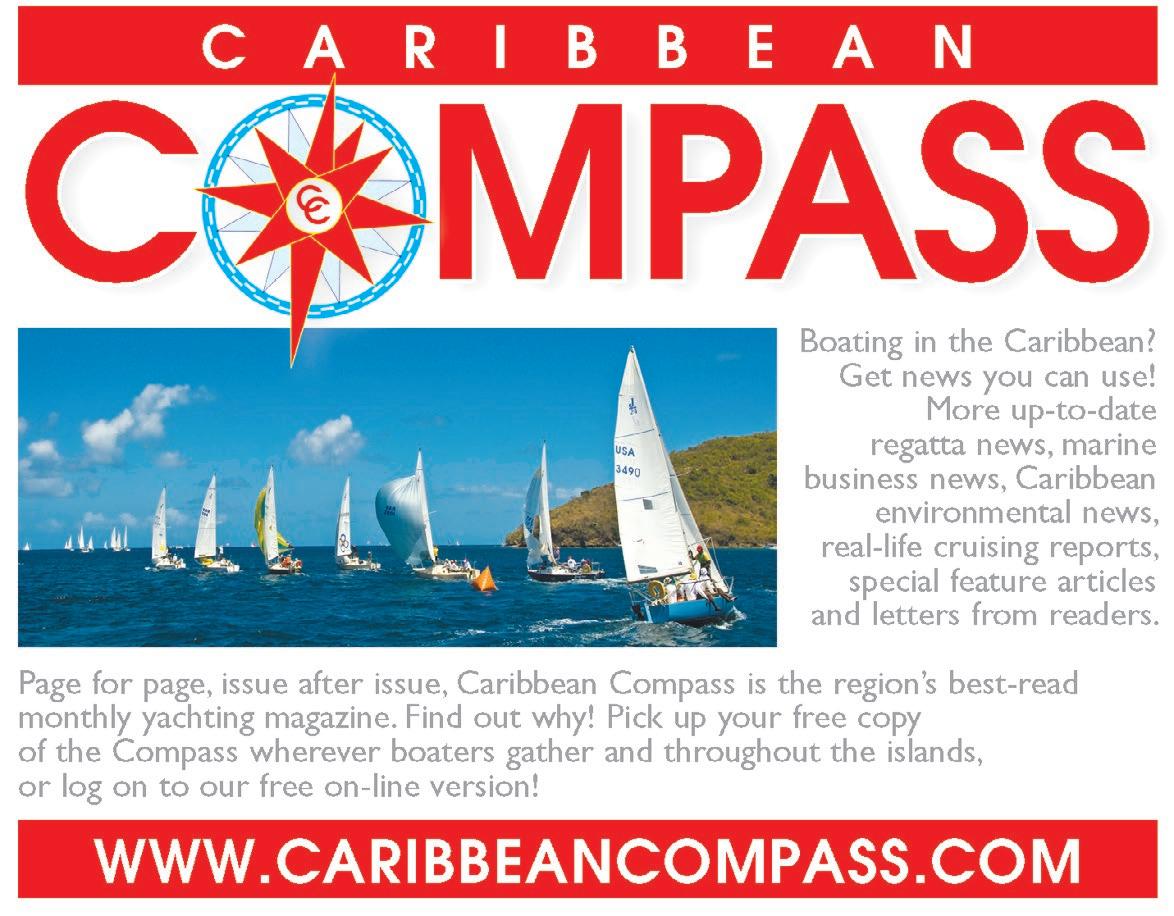
JUNE / JULY 20 23 CARIBBEAN COMPASS PAGE 39 ADVERTISER LOCATION PG# ADVERTISER LOCATION PG# ADVERTISER LOCATION PG# ADVERTISER LOCATION PG# Art Fabrik Grenada MP Bequia ThreadWorks SVG MP Blue Lagoon Hotel & Marina SVG 6 Boat Paint & Composites St. Maarten 27 Budget Marine St. Maarten 2 Budget Marine St. Kitts St. Kitts MP Camper & Nicholsons Grenada 5 Carriacou Business Grenada MP Centenario & Co Panama 20 Clarkes Court Grenada 21 Club De Pesca Marina Colombia 20 Douglas Yacht Services Martinique 10 Down Island Real Estate Grenada MP Doyle Offshore Sails Barbados 14 Doyle's Guides USA 27 Grenada Marine Grenada 32 Happy Kite SVG MP Horizon Yacht Charters Grenada 28 Hutch's E-book C/W 38 Hydrovane International Marine Inc C/W MP Island Water World St. Maarten 40 Kayak Café & Juice Bar Grenada 38 LAC Services SVG MP Mac's Pizzeria SVG MP Marigot Beach Club St. Lucia 36 Marina Santa Marta Colombia 24 McIntyre Bros Grenada 38 Mid Atlantic Yacht Services Azores MP Ministry of Trade & Industry Trinidad 15 Neil Pryde Sails Grenada MP Off Shore Risk Management Tortola 23 Peake Yacht Services Trinidad 9 Point Calivigny Estates Grenada 13 Power Boats Trinidad 19/MP Sailors for the Sea C/W 29 Spice Island Marine Grenada 31 St. Lucia Tourism Authority St. Lucia 25 Tobago Cays SVG MP Turbulence Sails Grenada 23/MP Venezuelan Marine Supply Venezuela MP Westerhall Rum Grenada 33 WhitCo Insurance USA 14 YSATT Trinidad MP ADVERTISERS INDEX MP = Market Place pages 37 - 38 C/W = Caribbean-wide DON‘T LEAVE PORT WITHOUT IT CLASSIFIEDS CLASSIFIEDS US 50¢ PER WORD Include name, address and numbers in count. Line drawings/photos accompanying classifieds are US$10. Pre-paid by the 10th of the month: E-mail: shellese@caribbeancompass.com
Visit our website at caribbeancompass.com or just scan the QR code BELOW and enter your email address it’s as easy as that! PROPERTY FOR SALE
BOATS FOR SALE
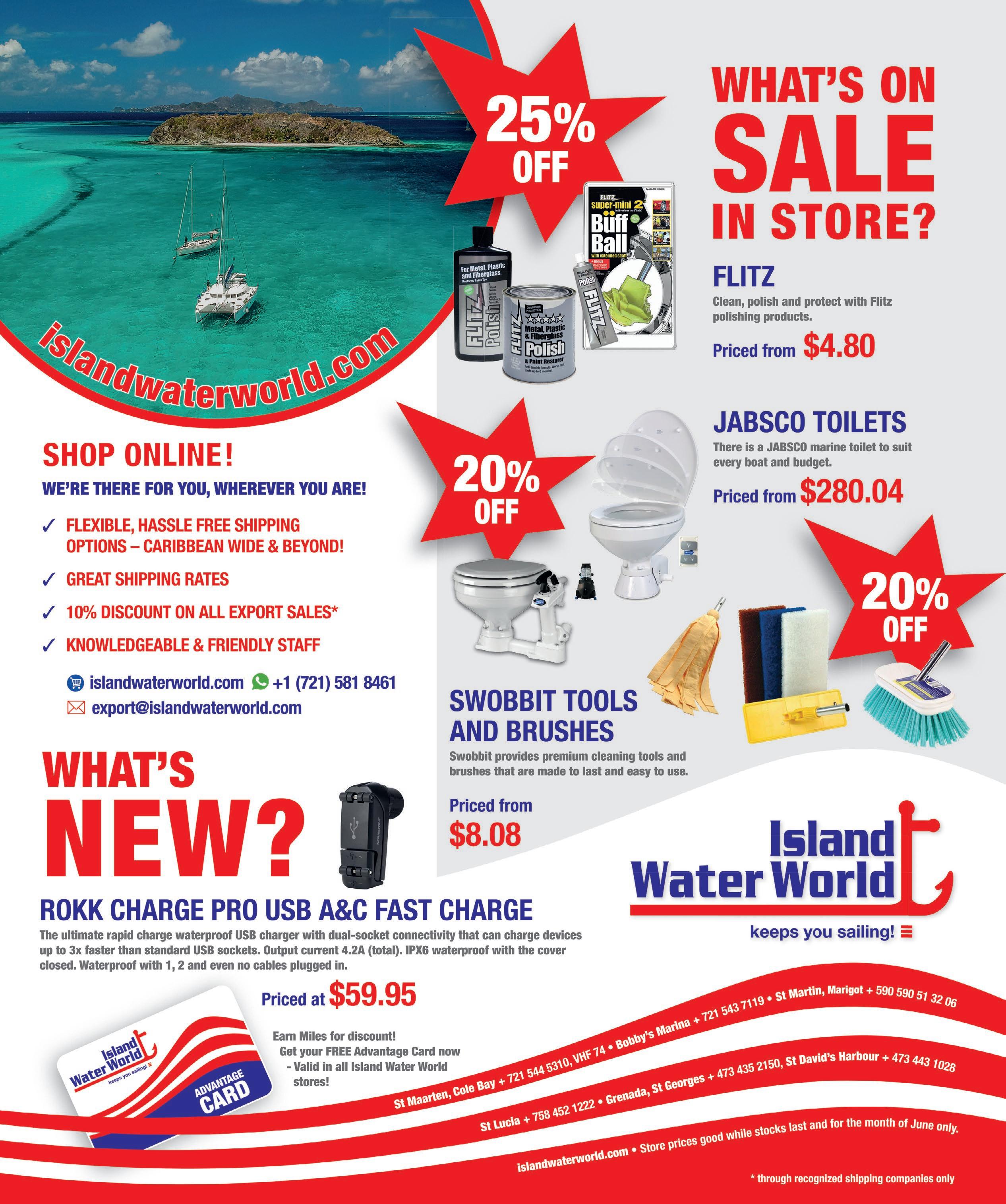
Published by Compass Publishing LLC, Connecticut, USA, and printed by Guardian Media Limited, Trinidad & Tobago































































































 Story and photos by Lexi Fisher
Story and photos by Lexi Fisher


























































